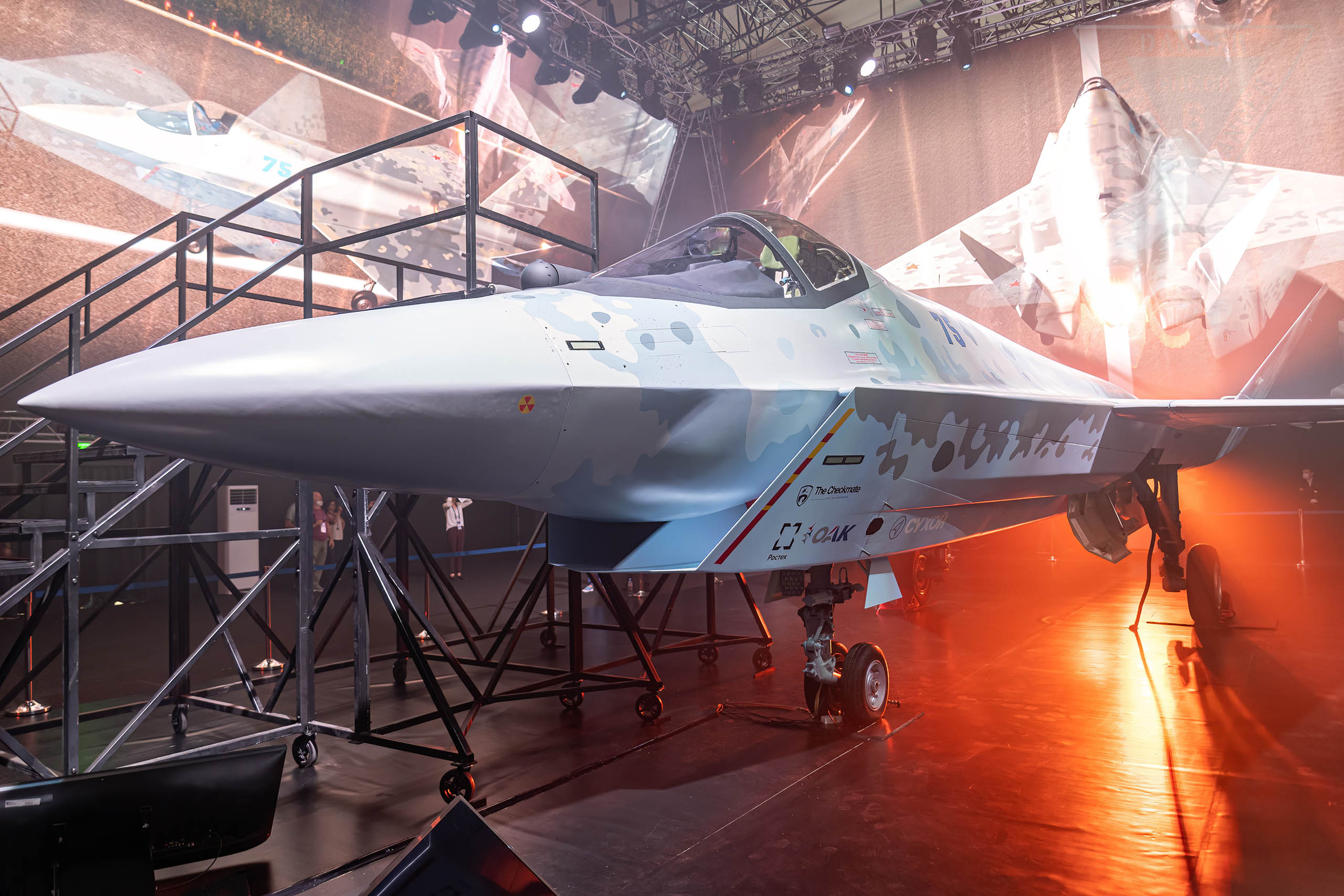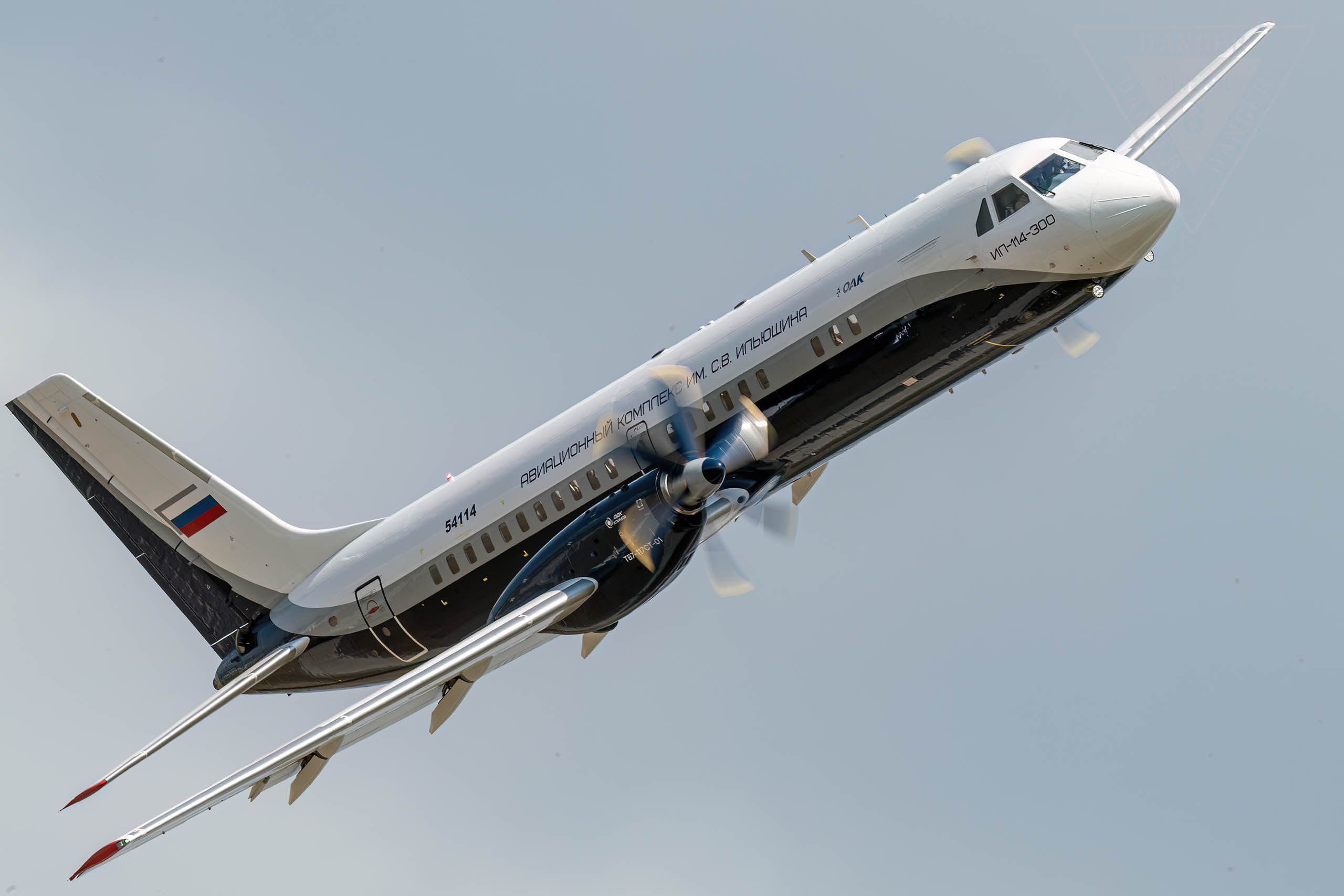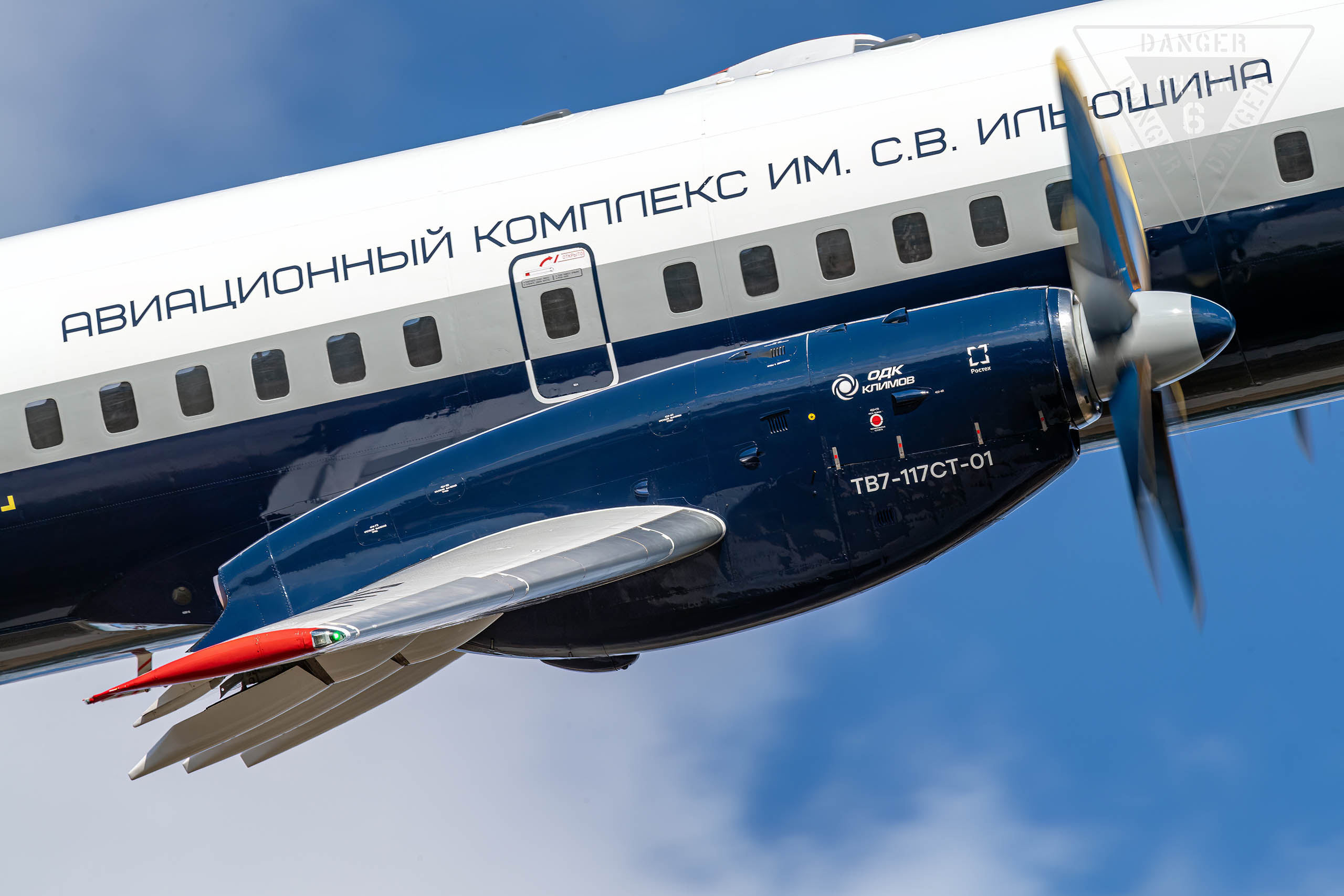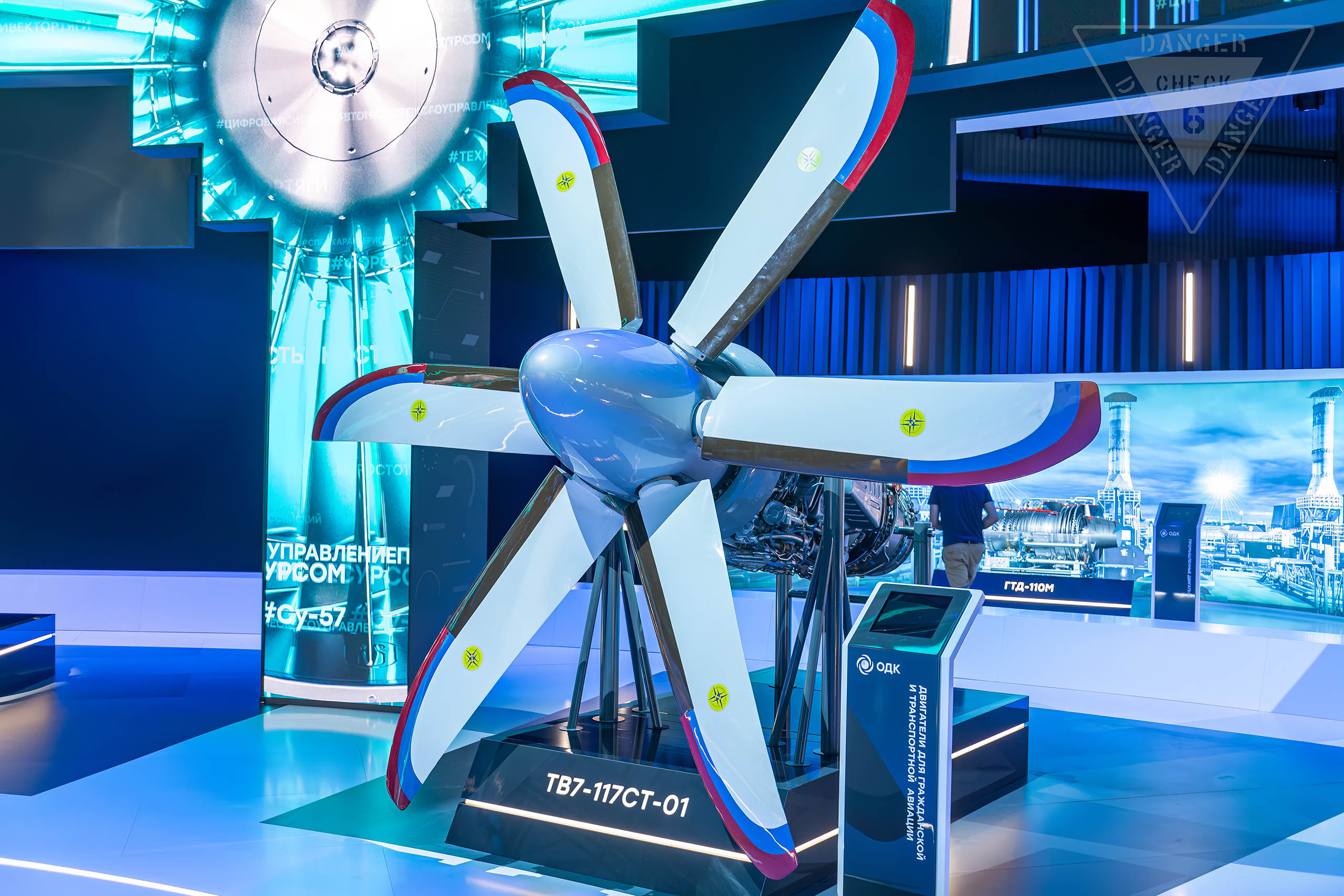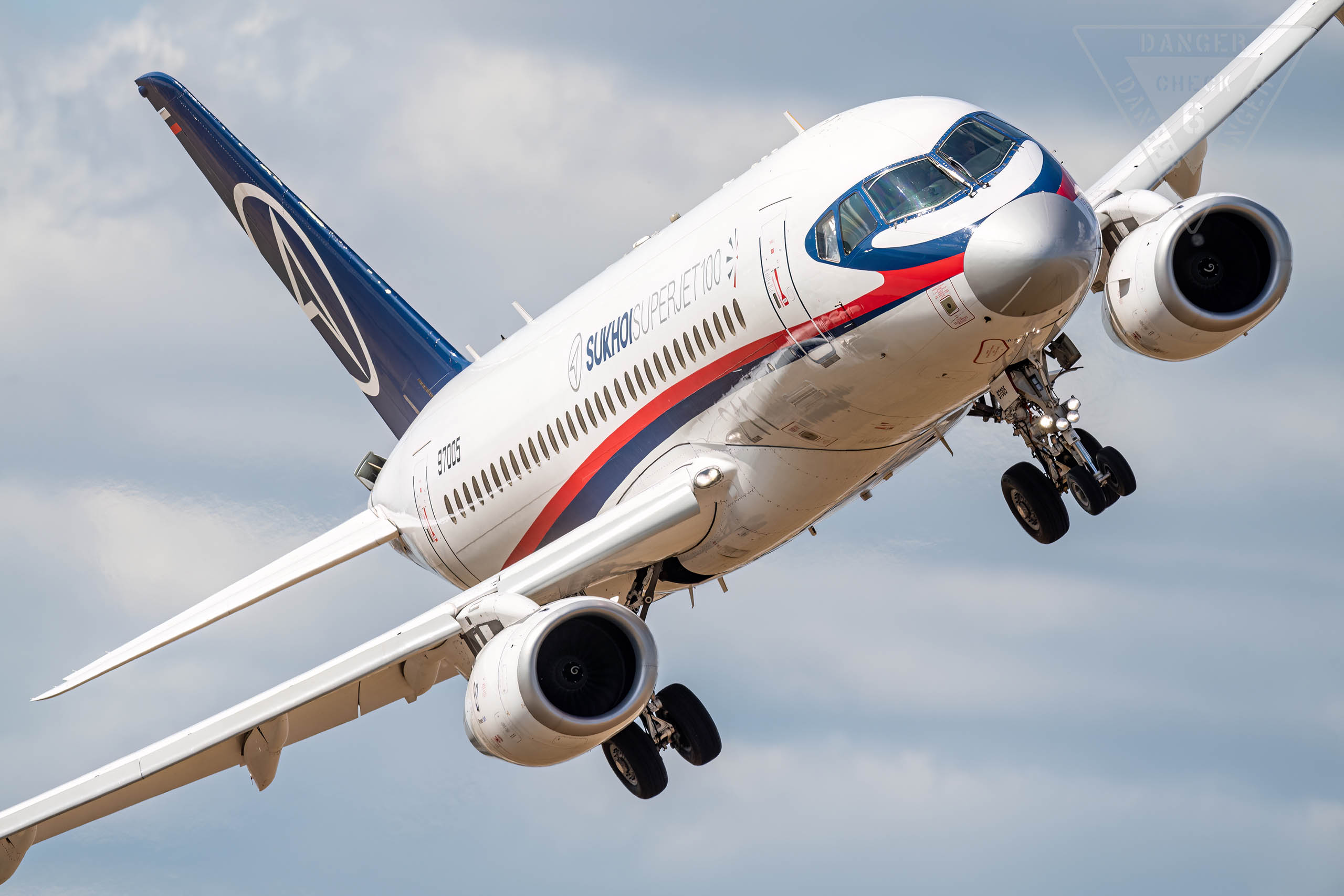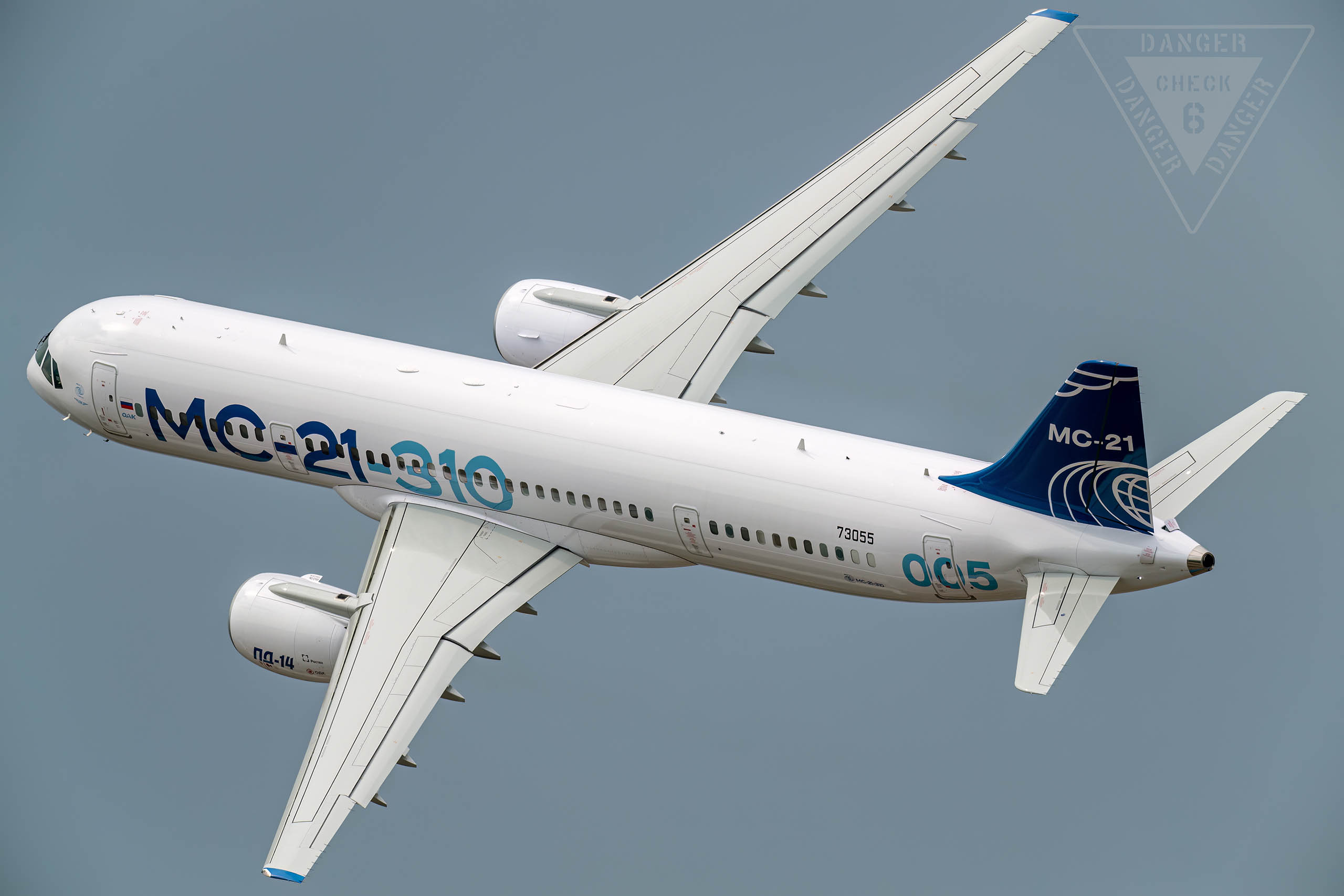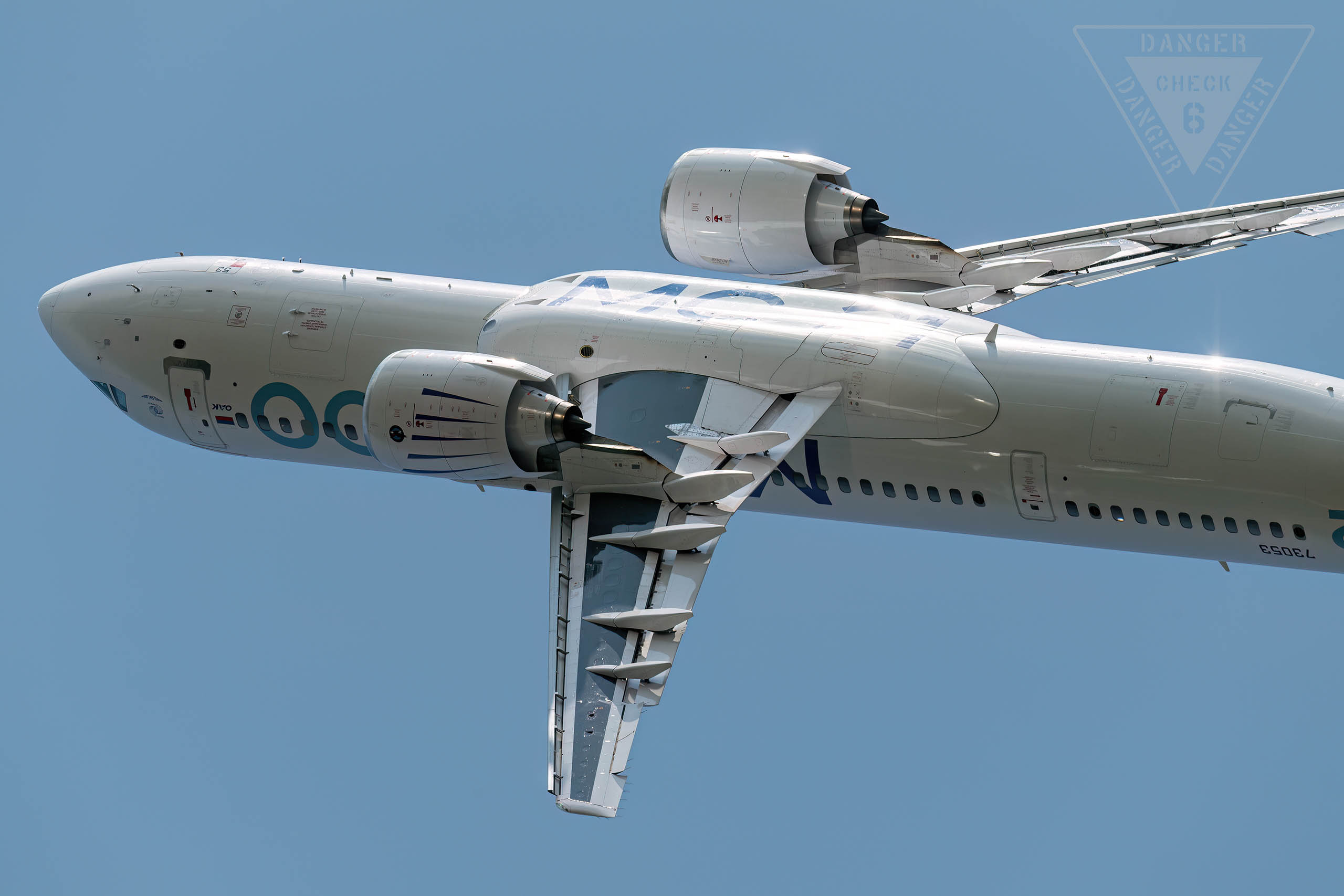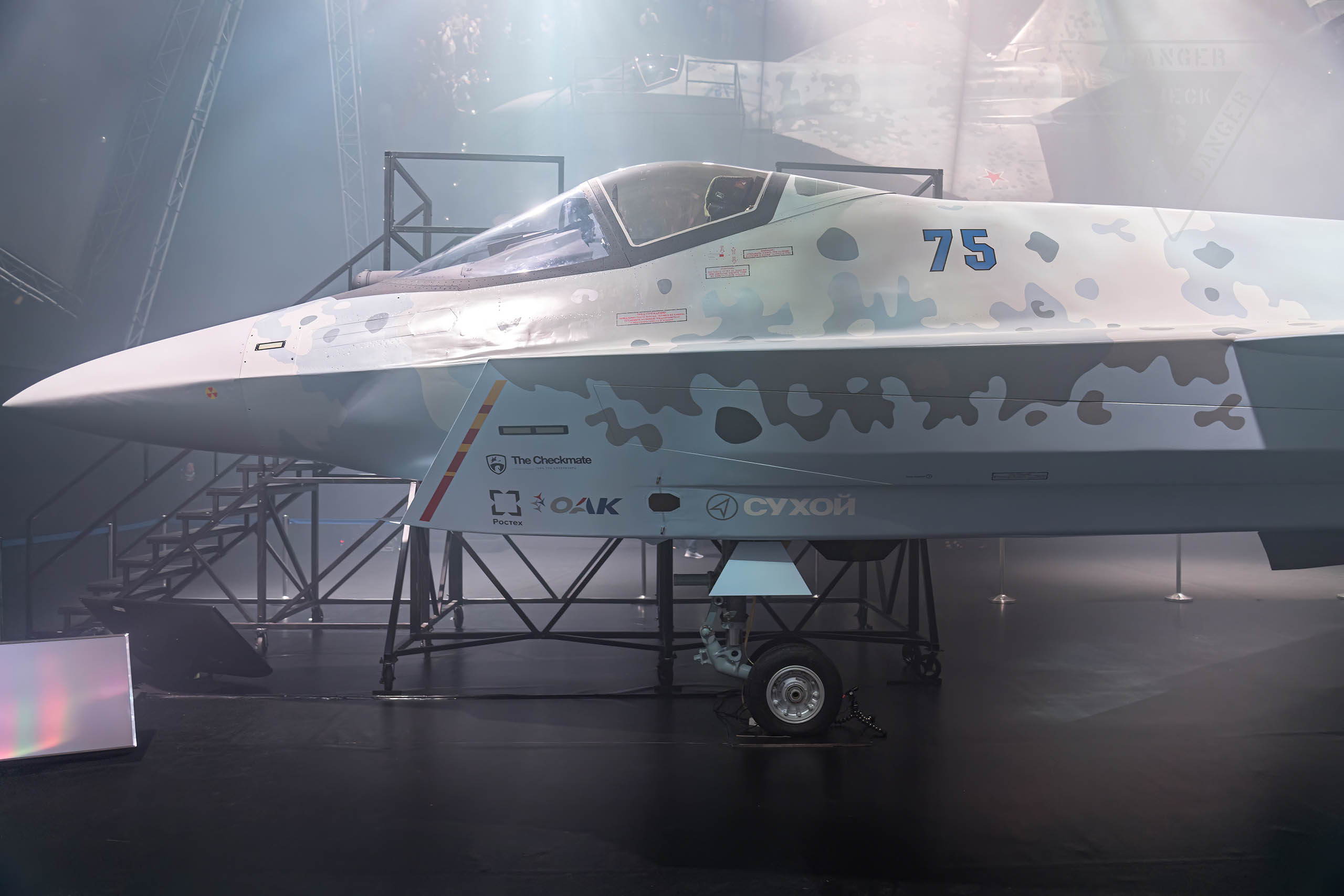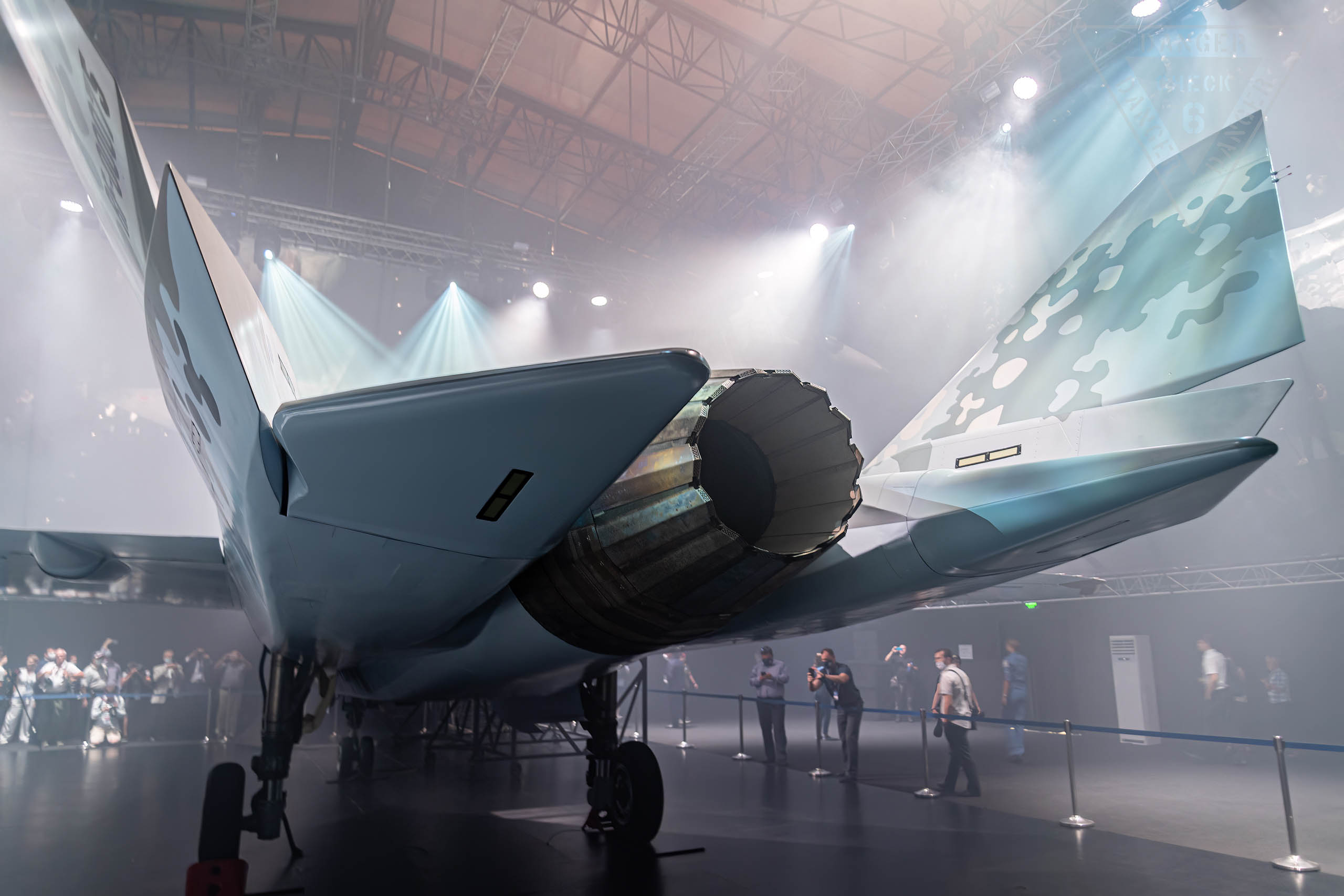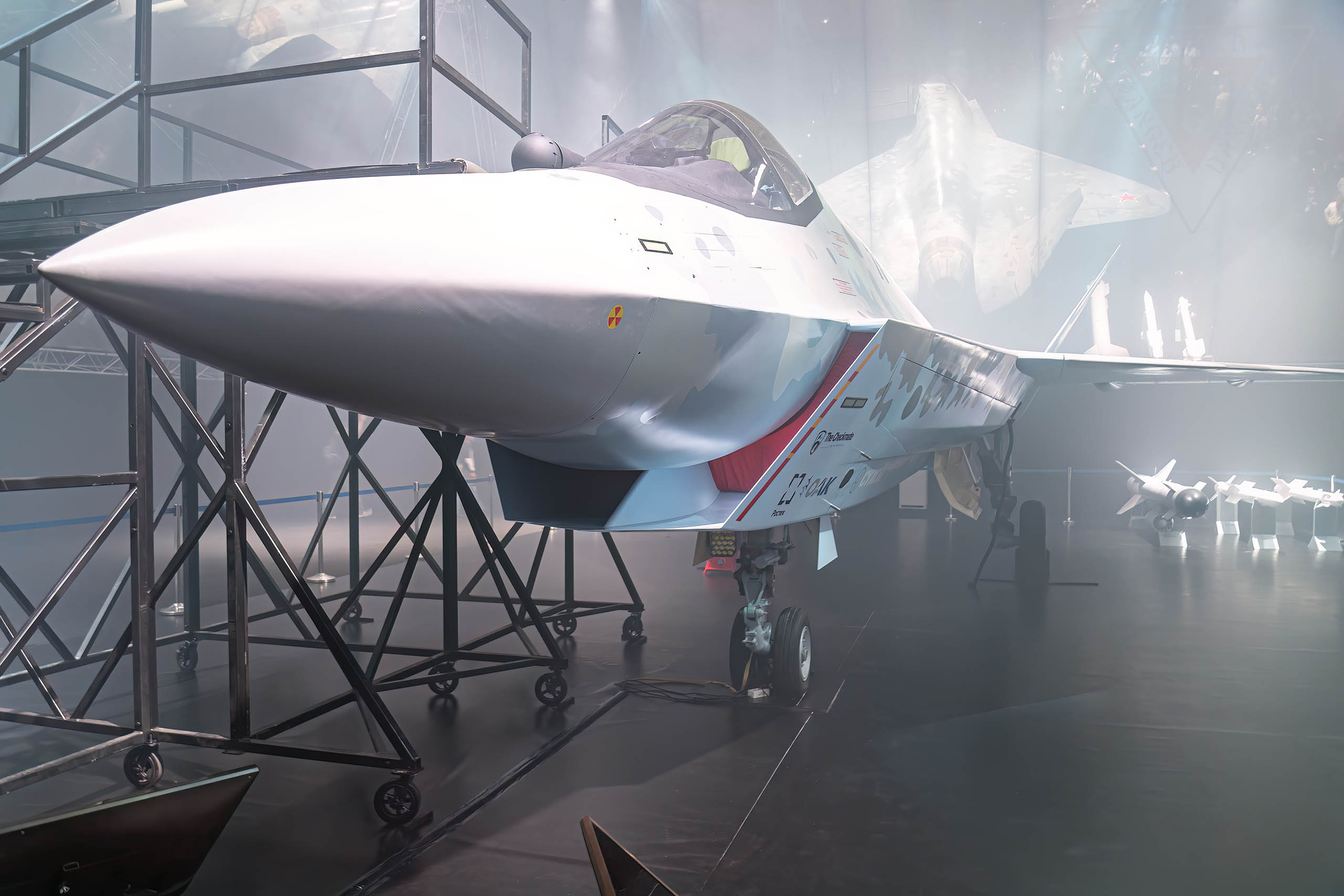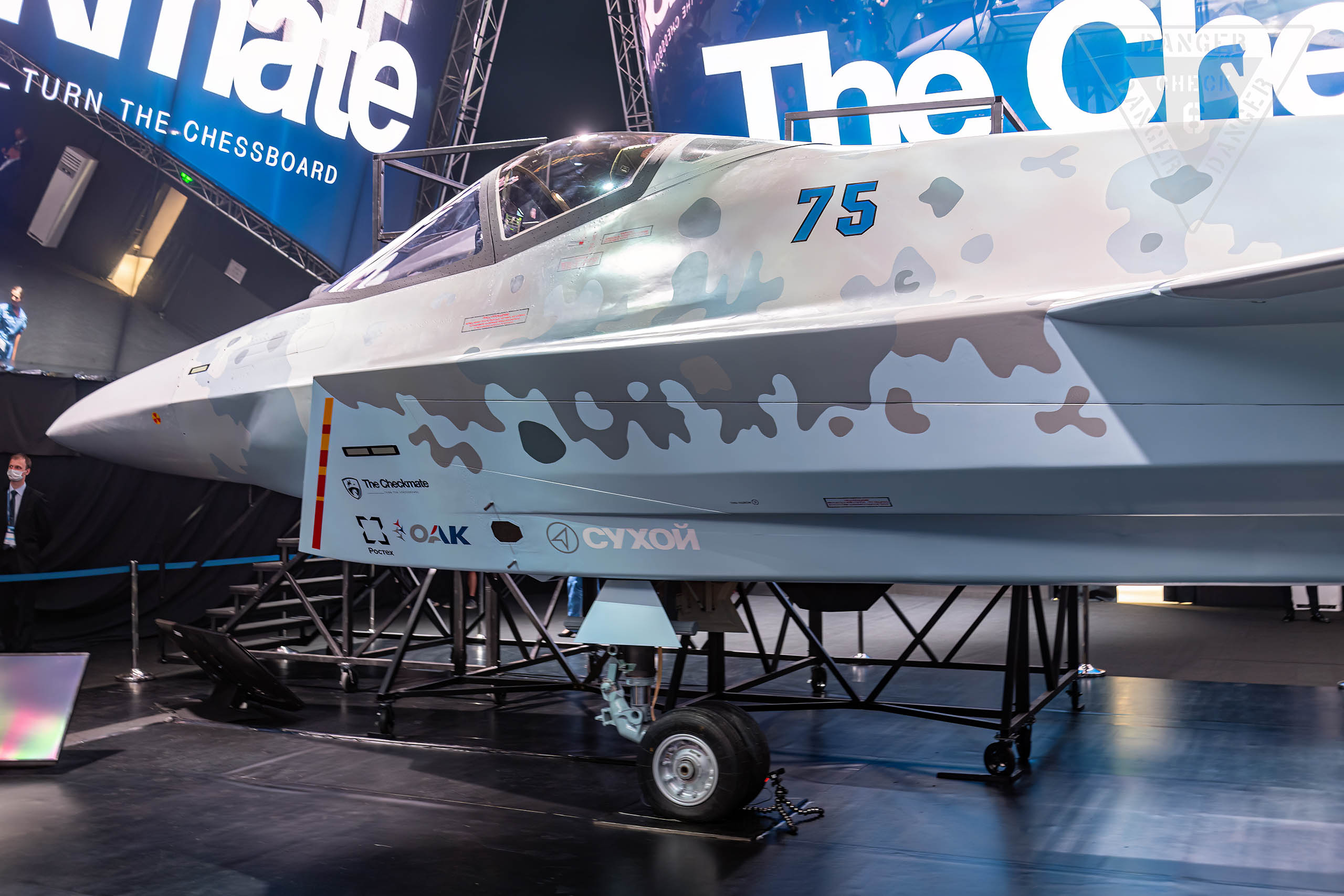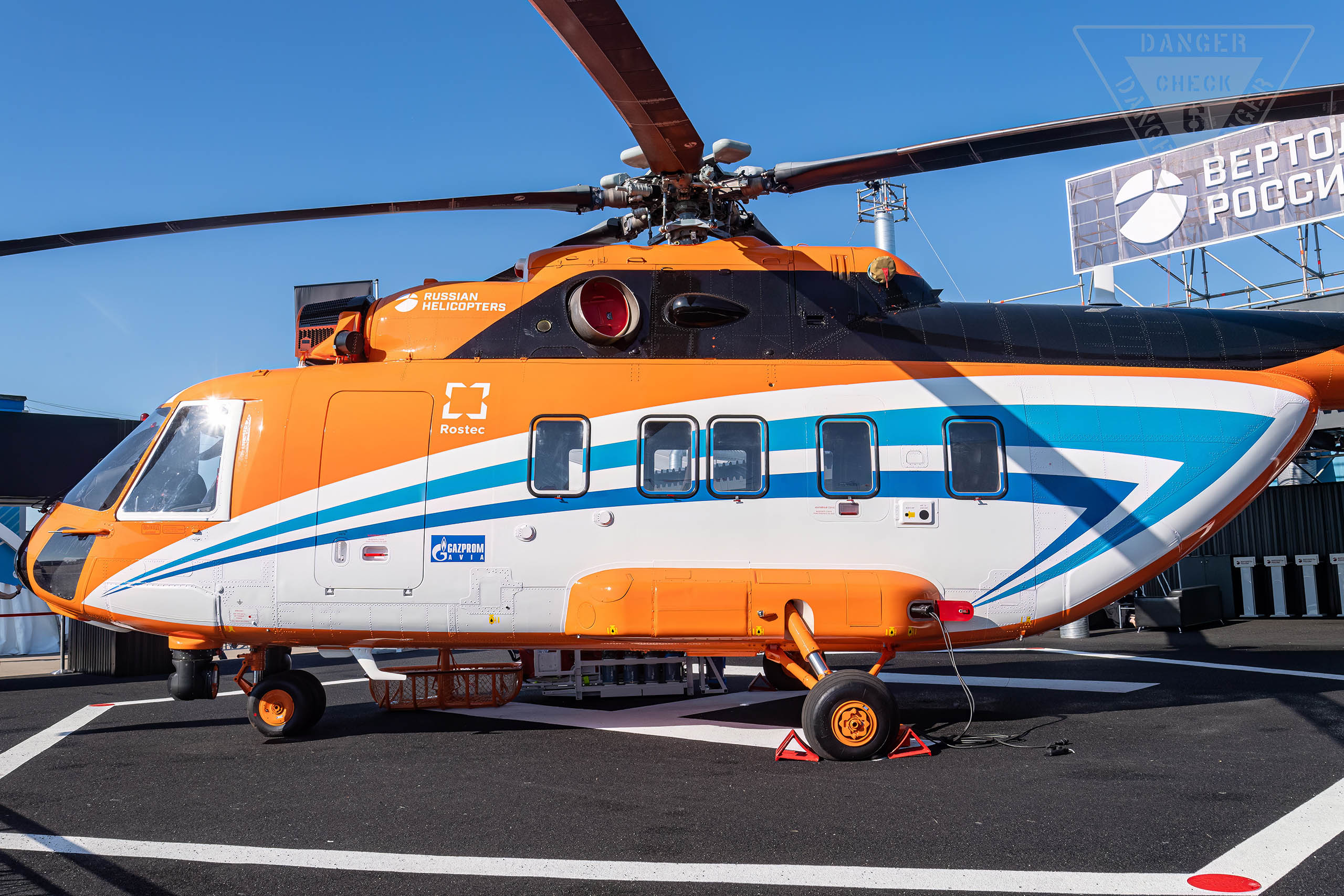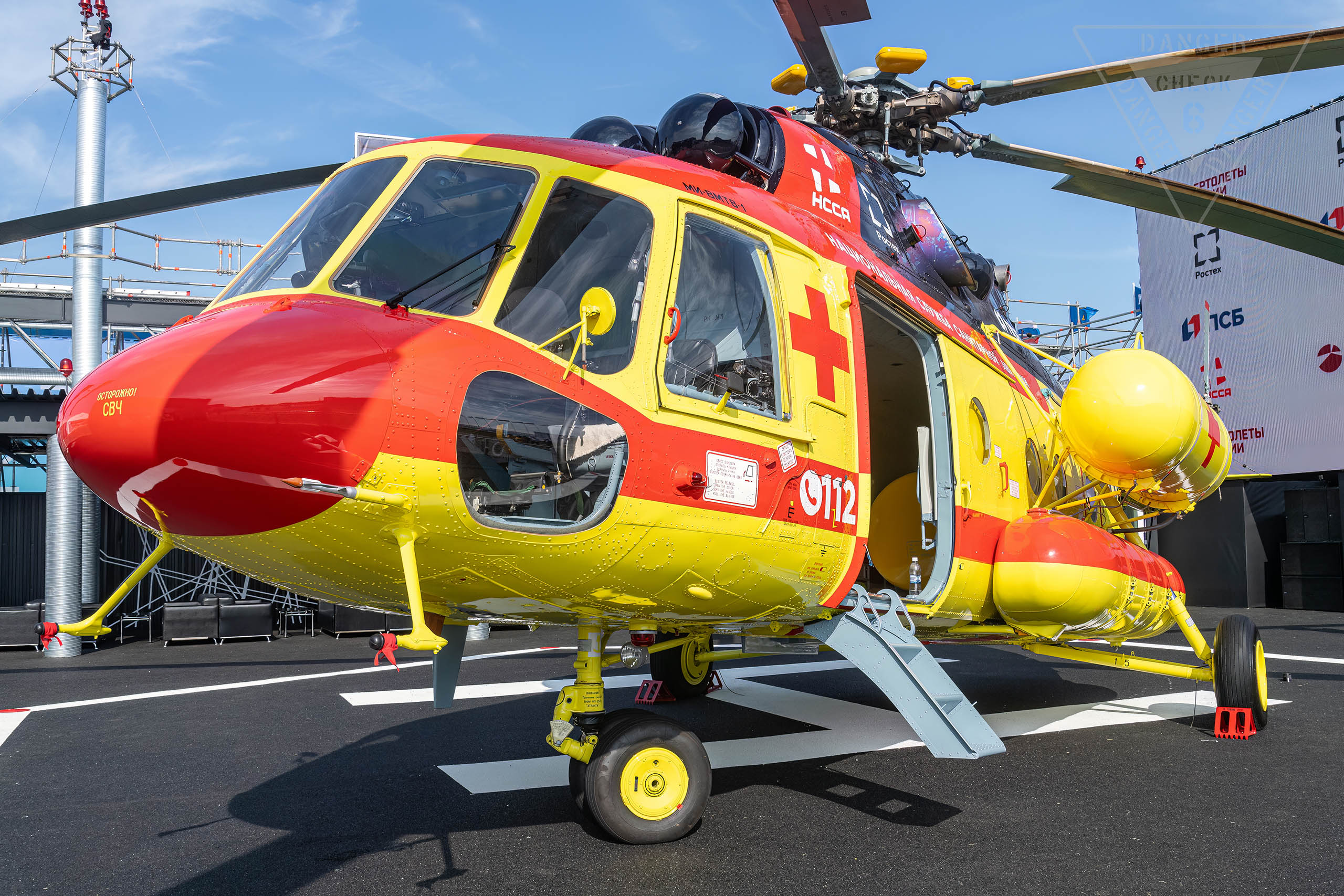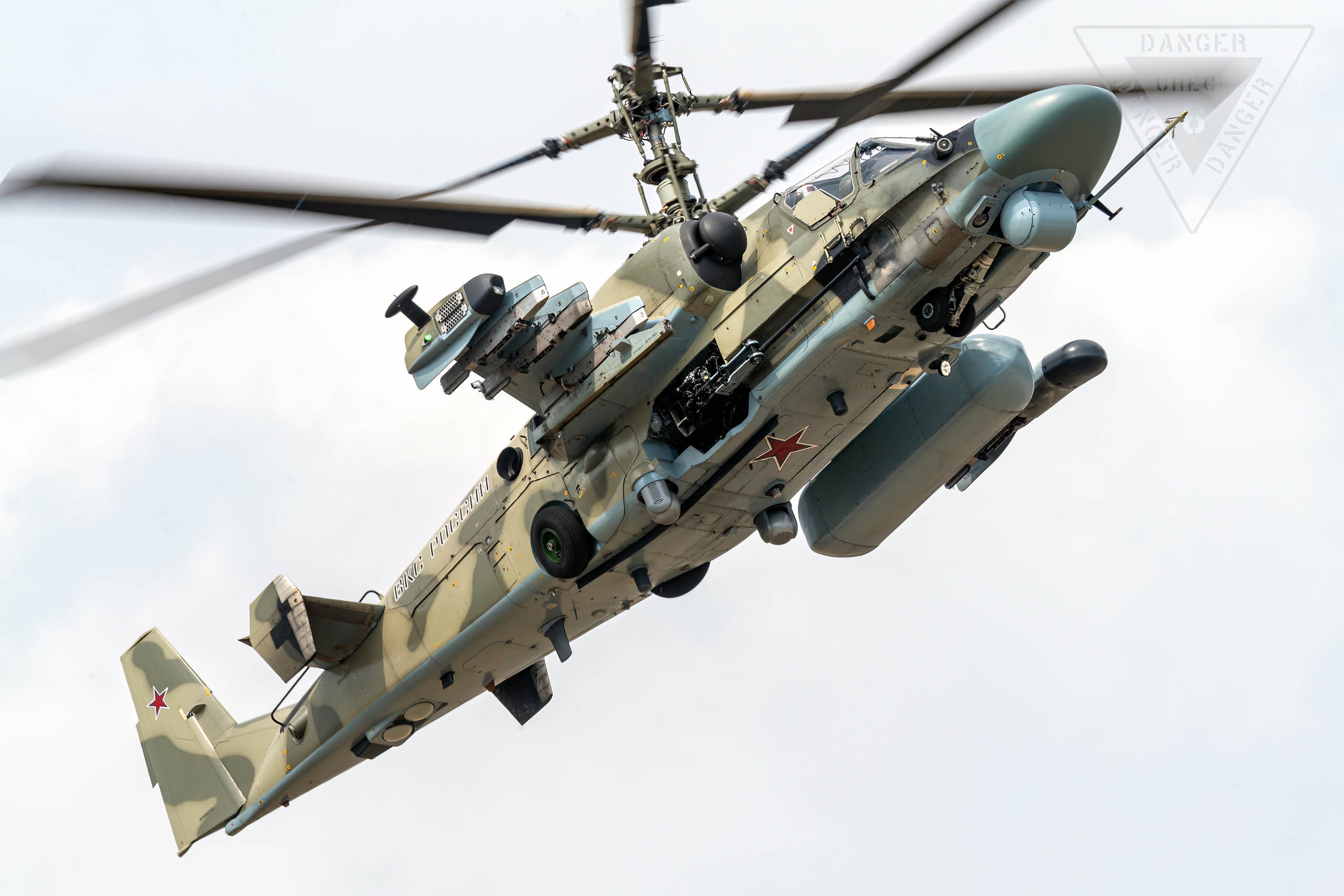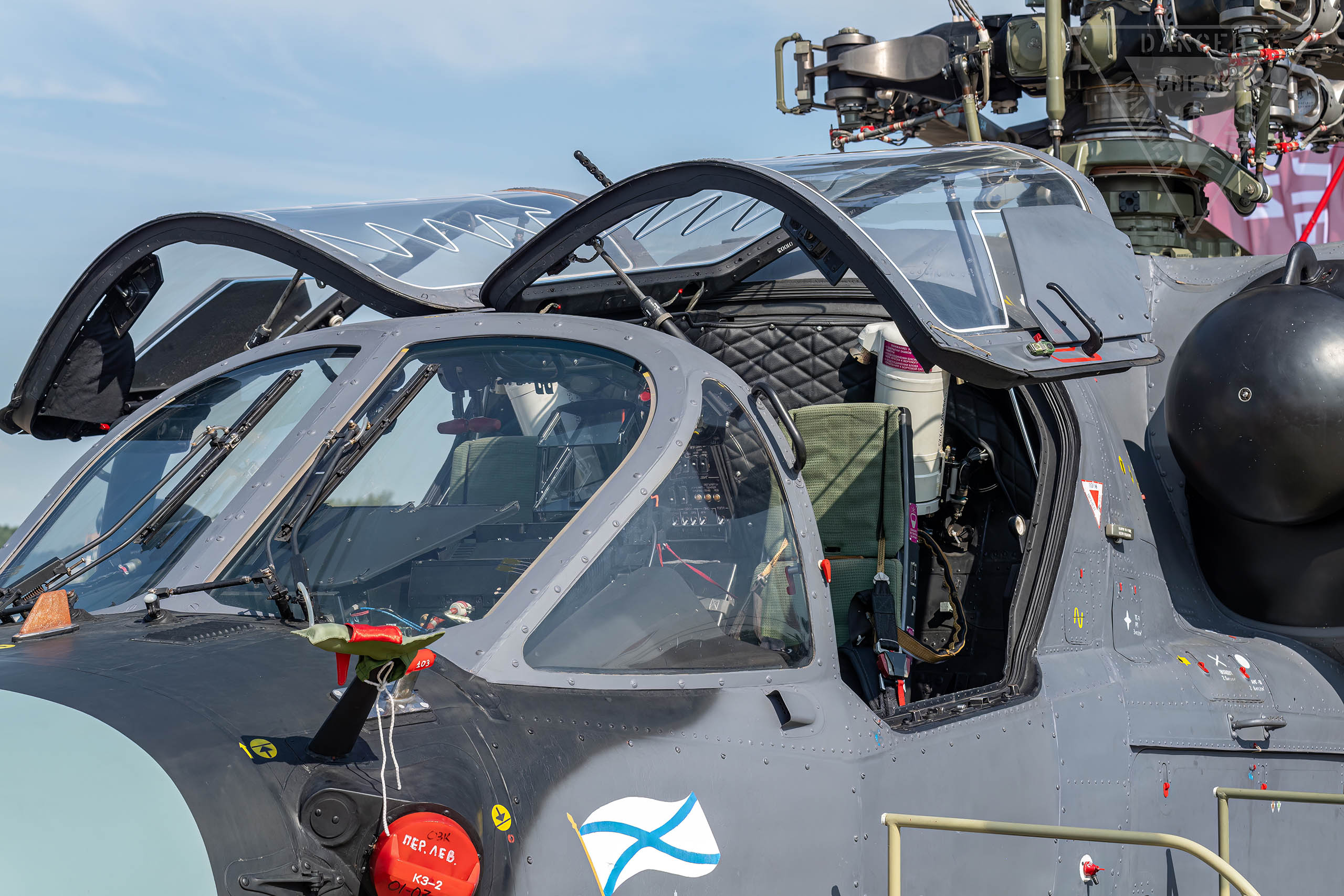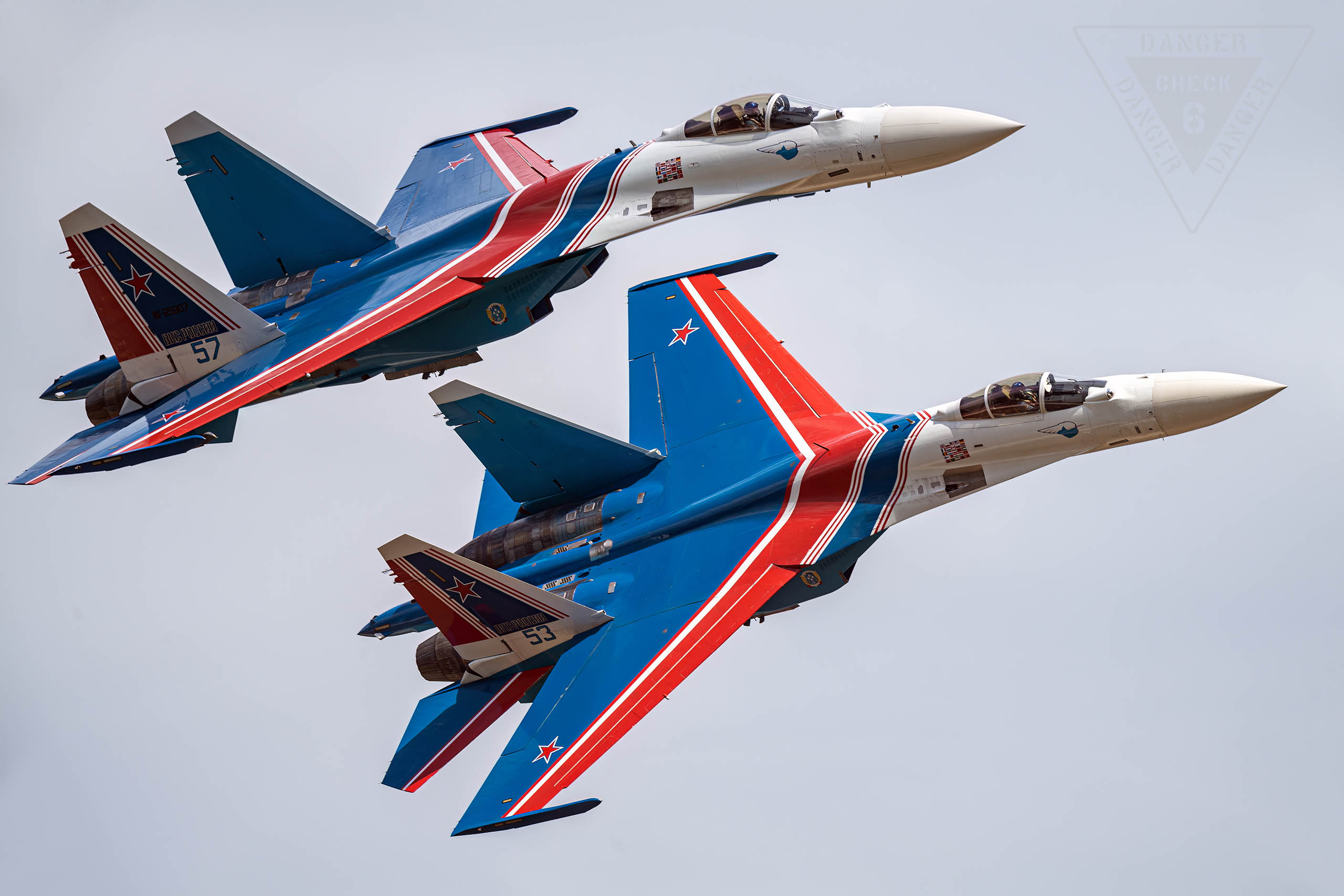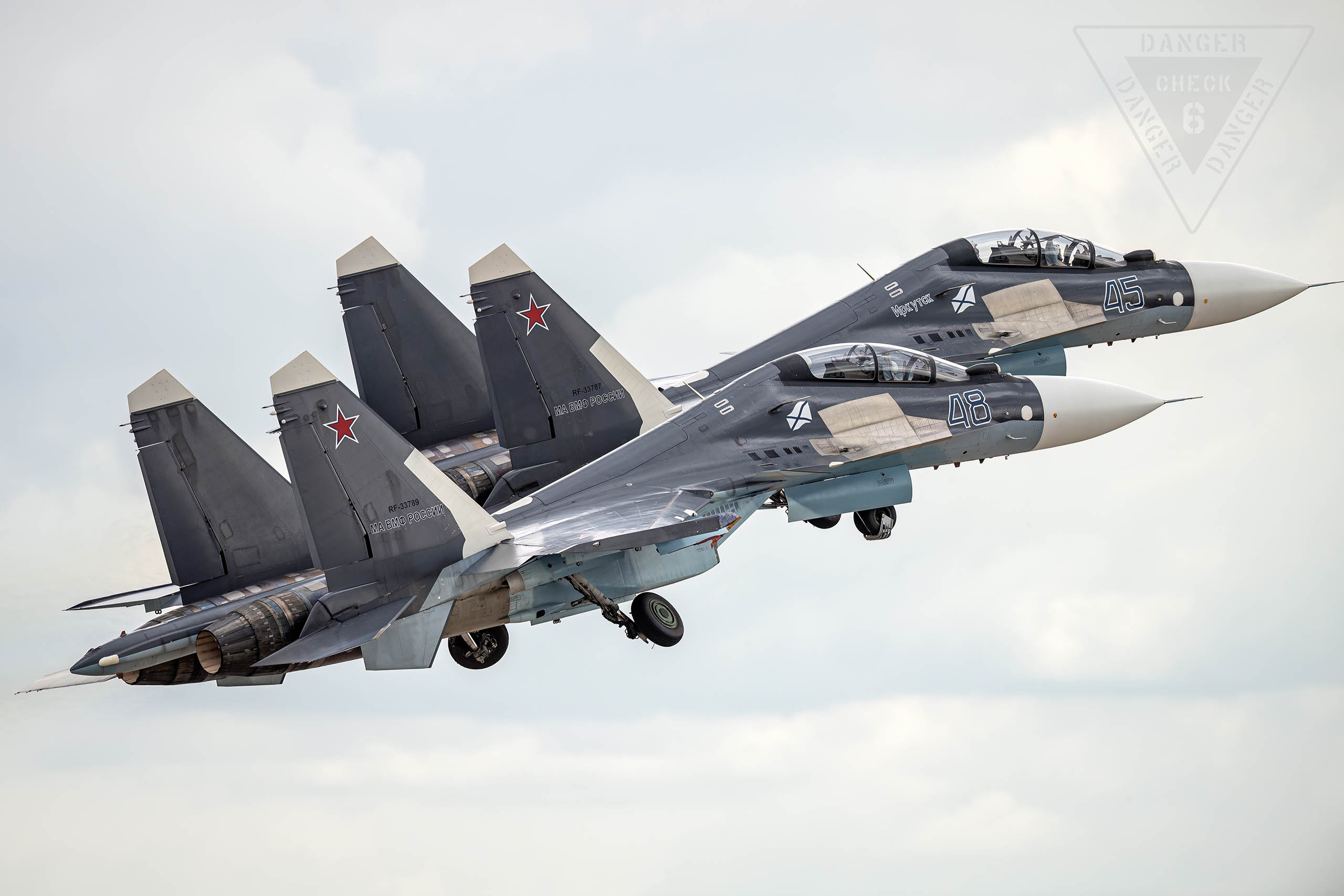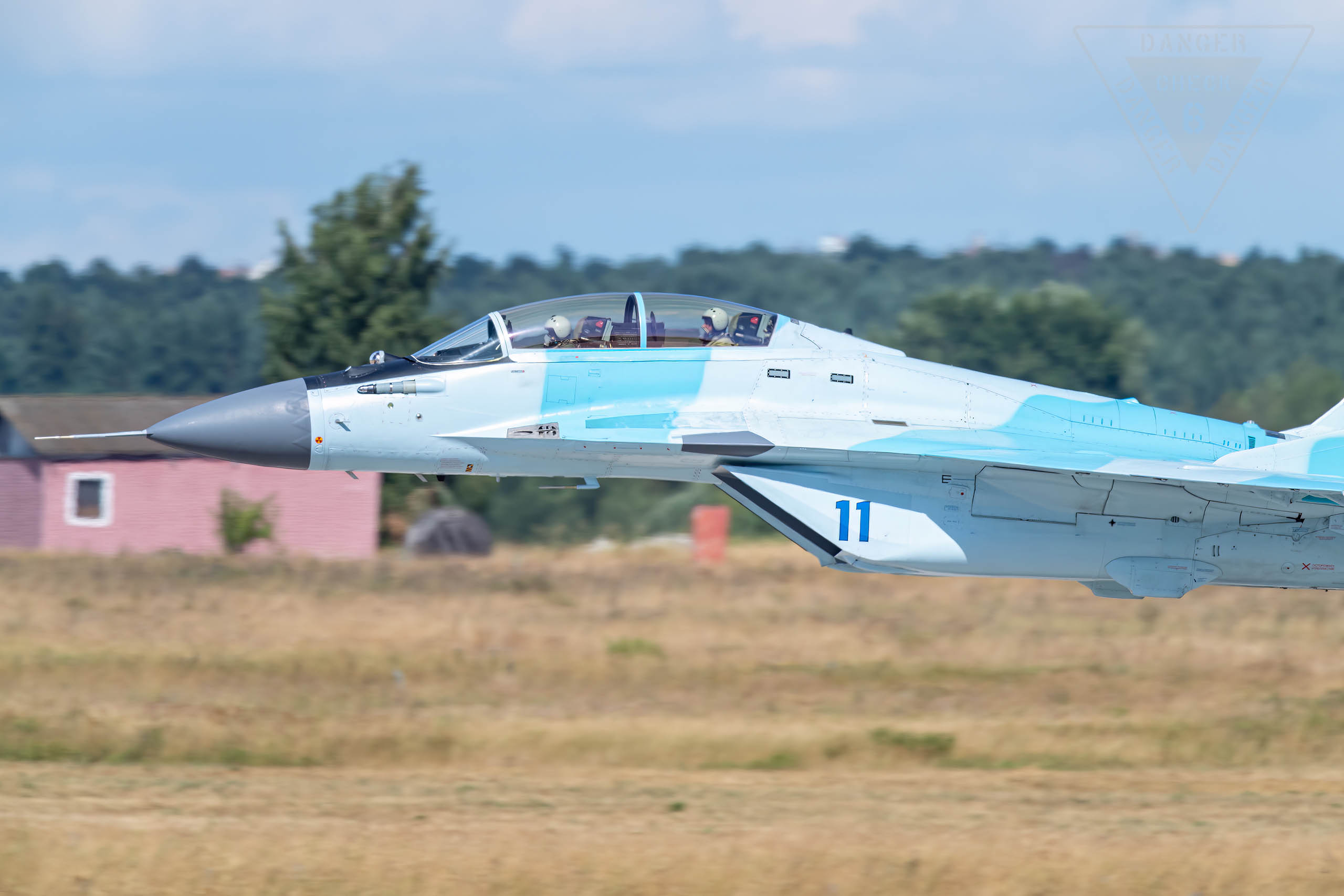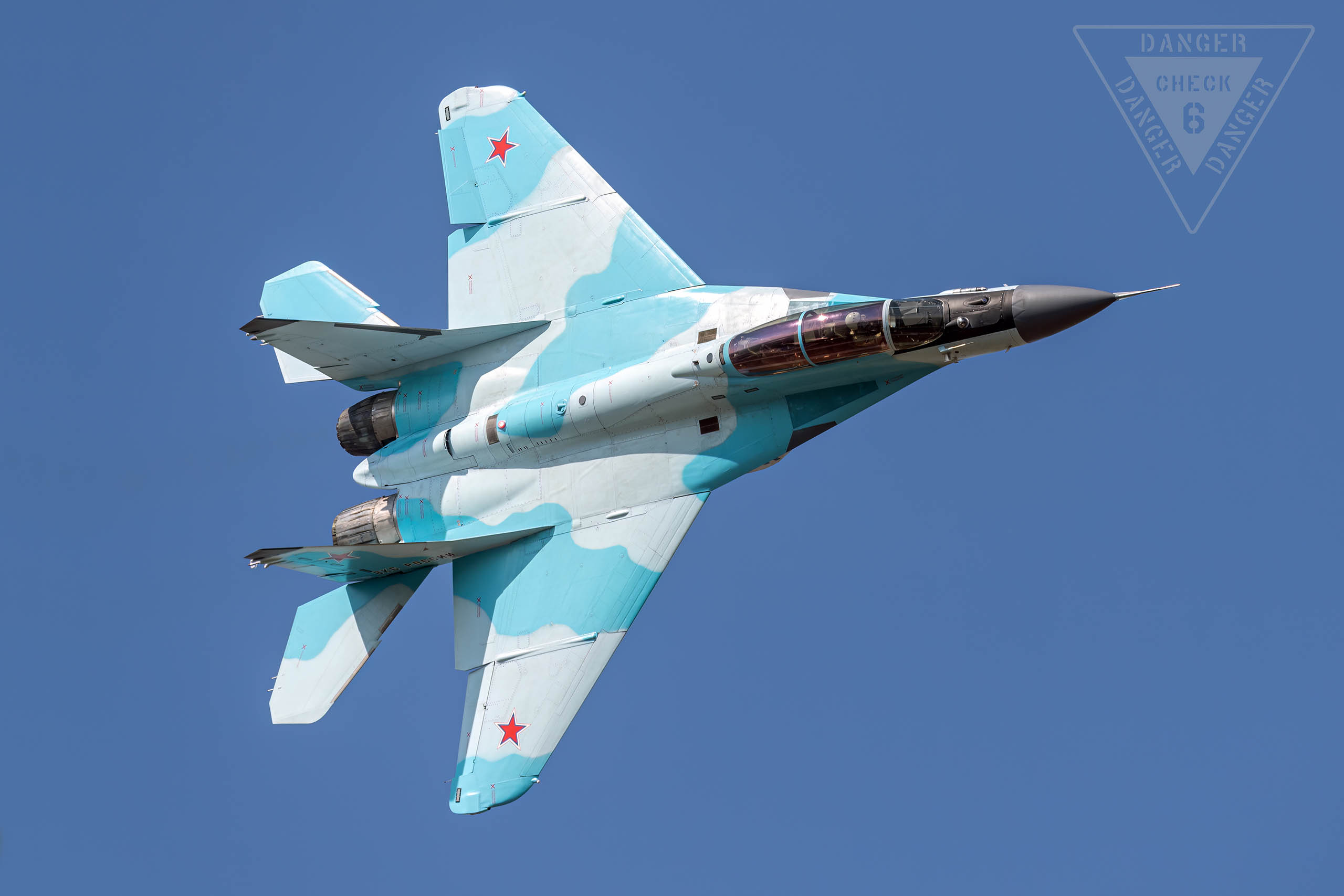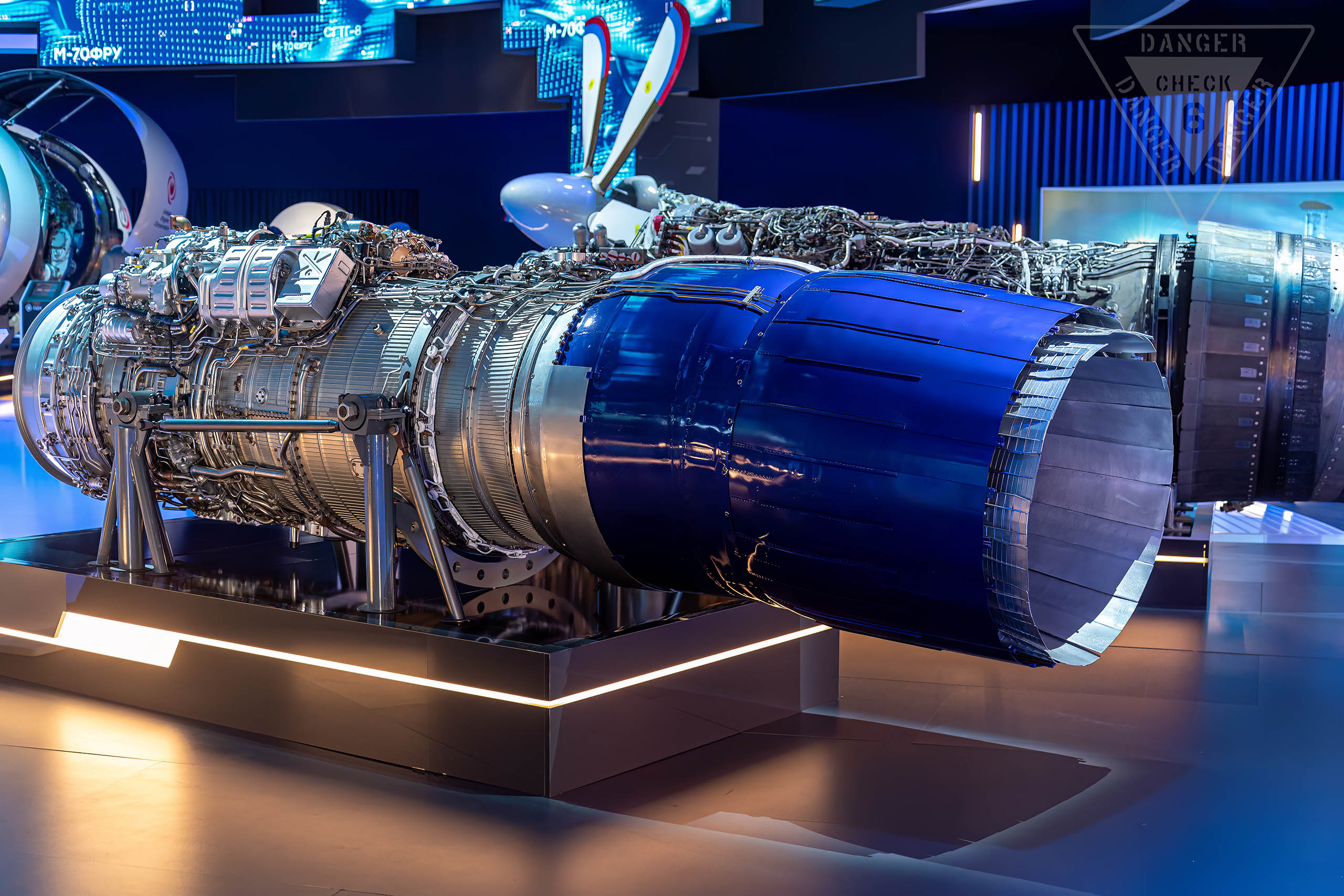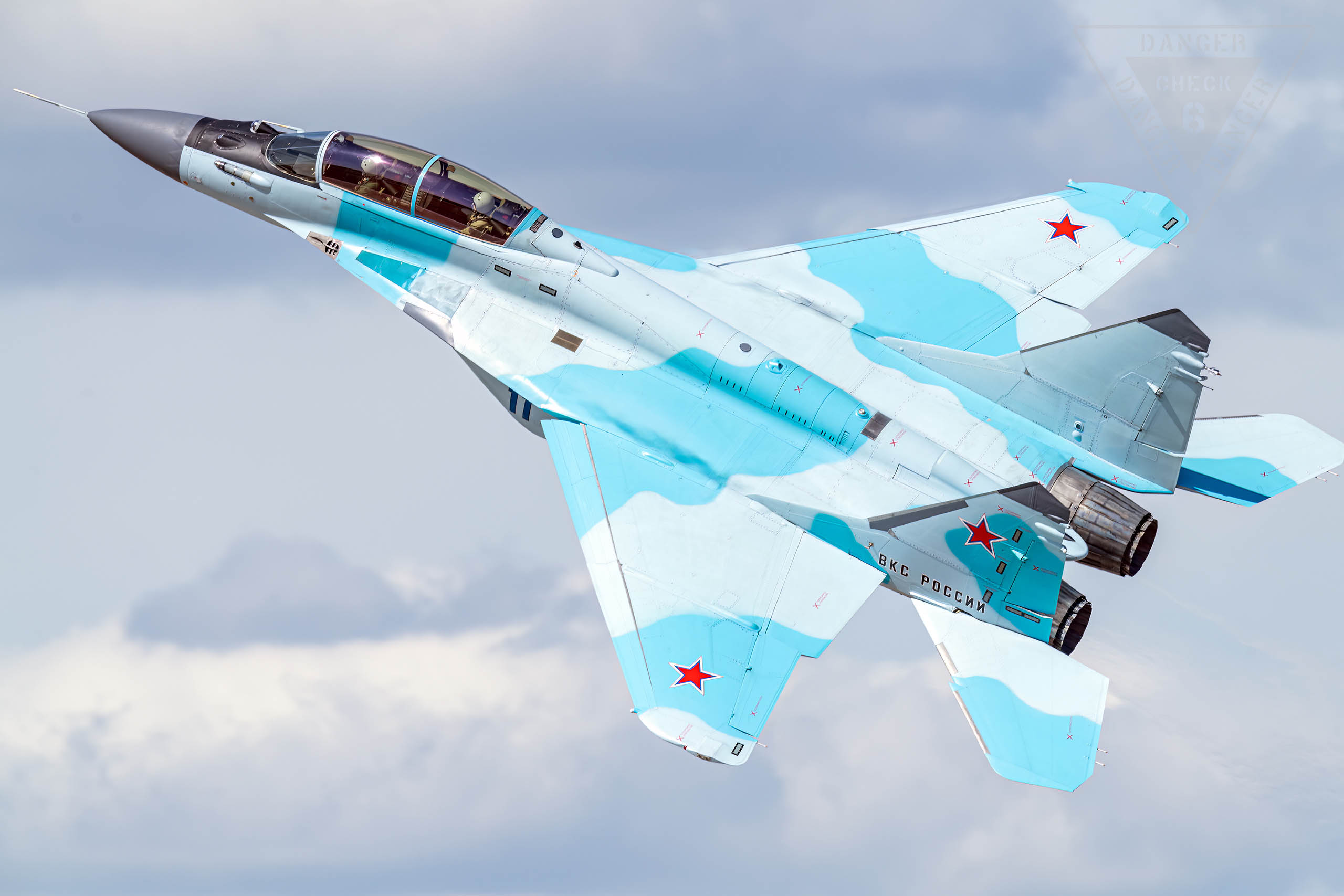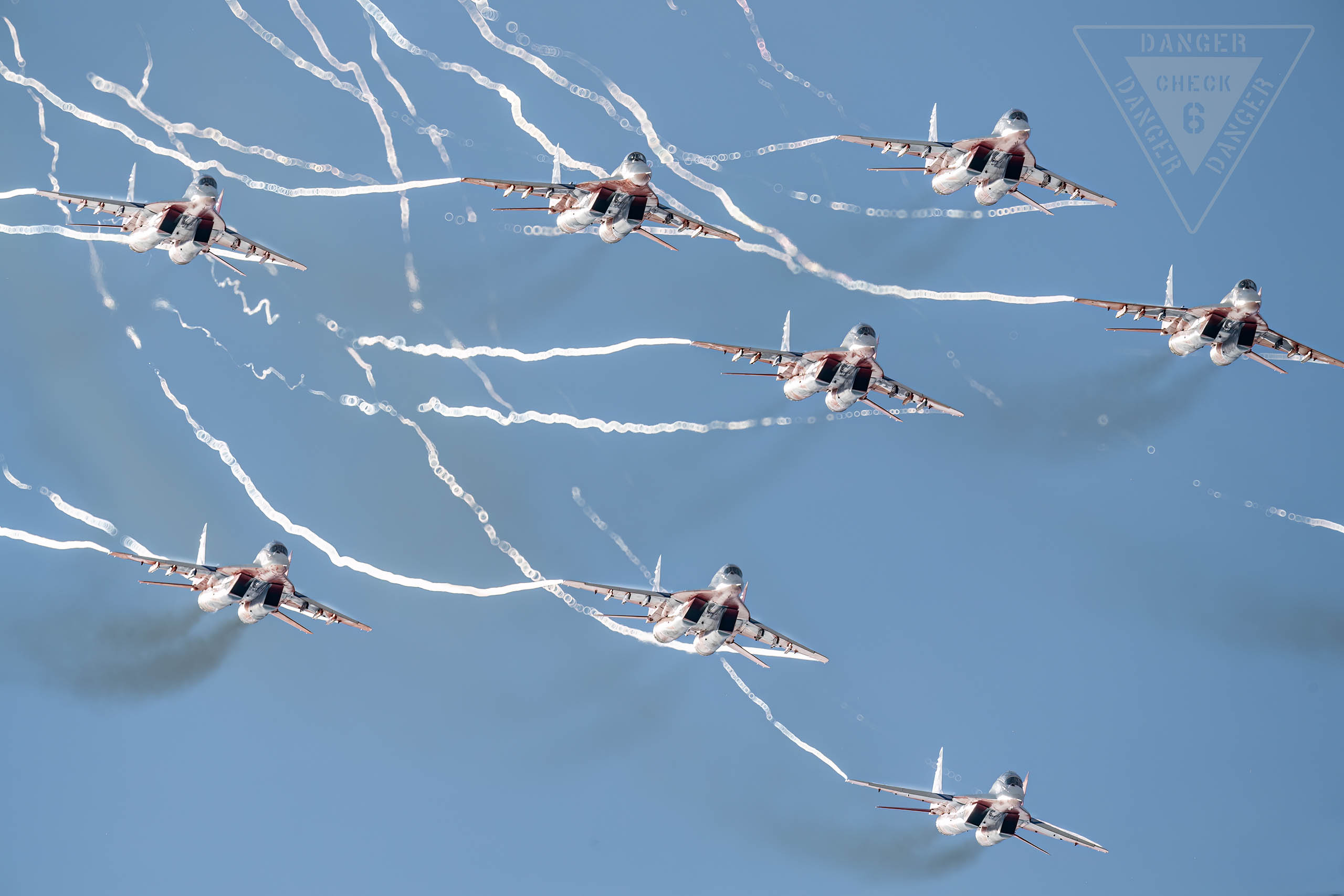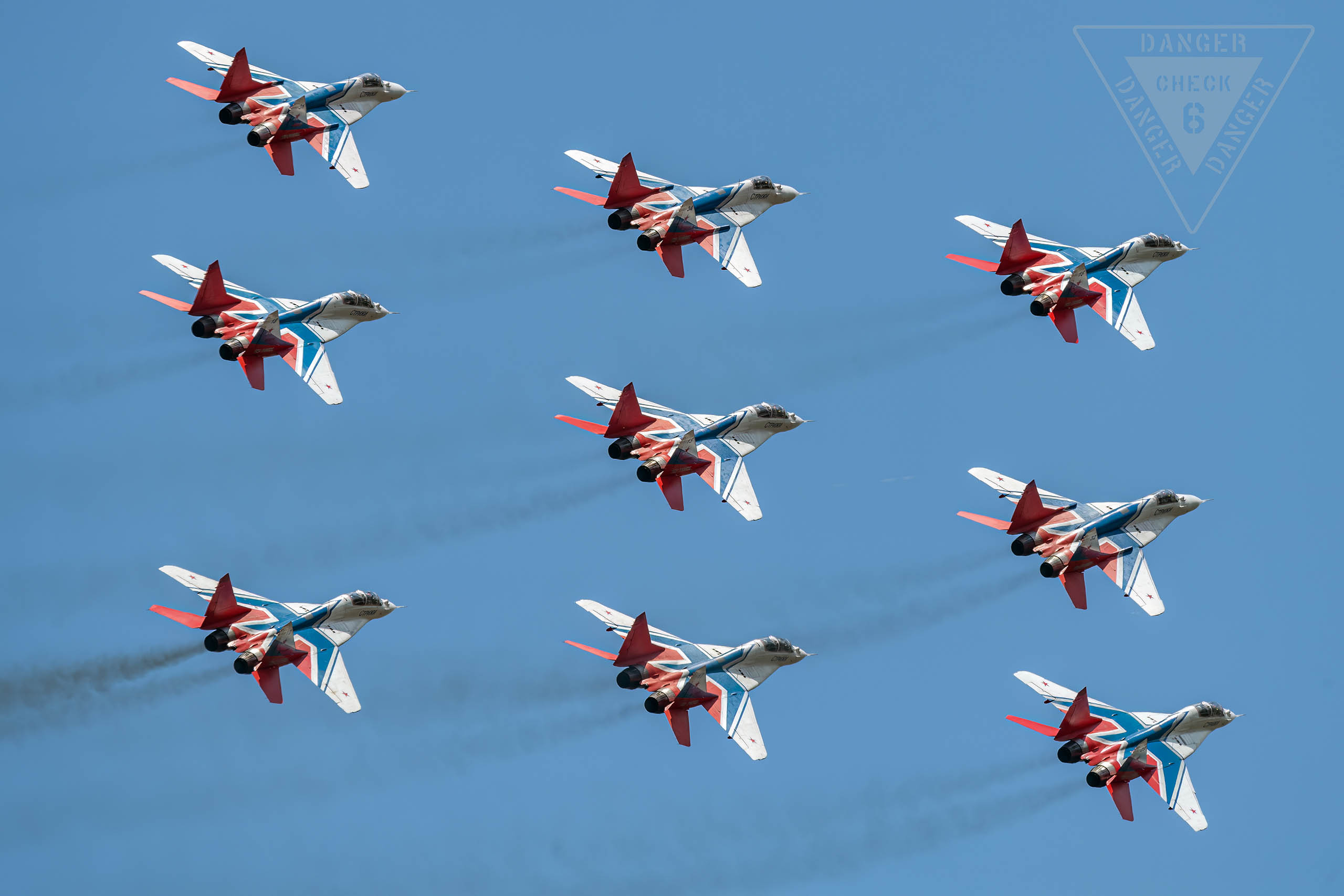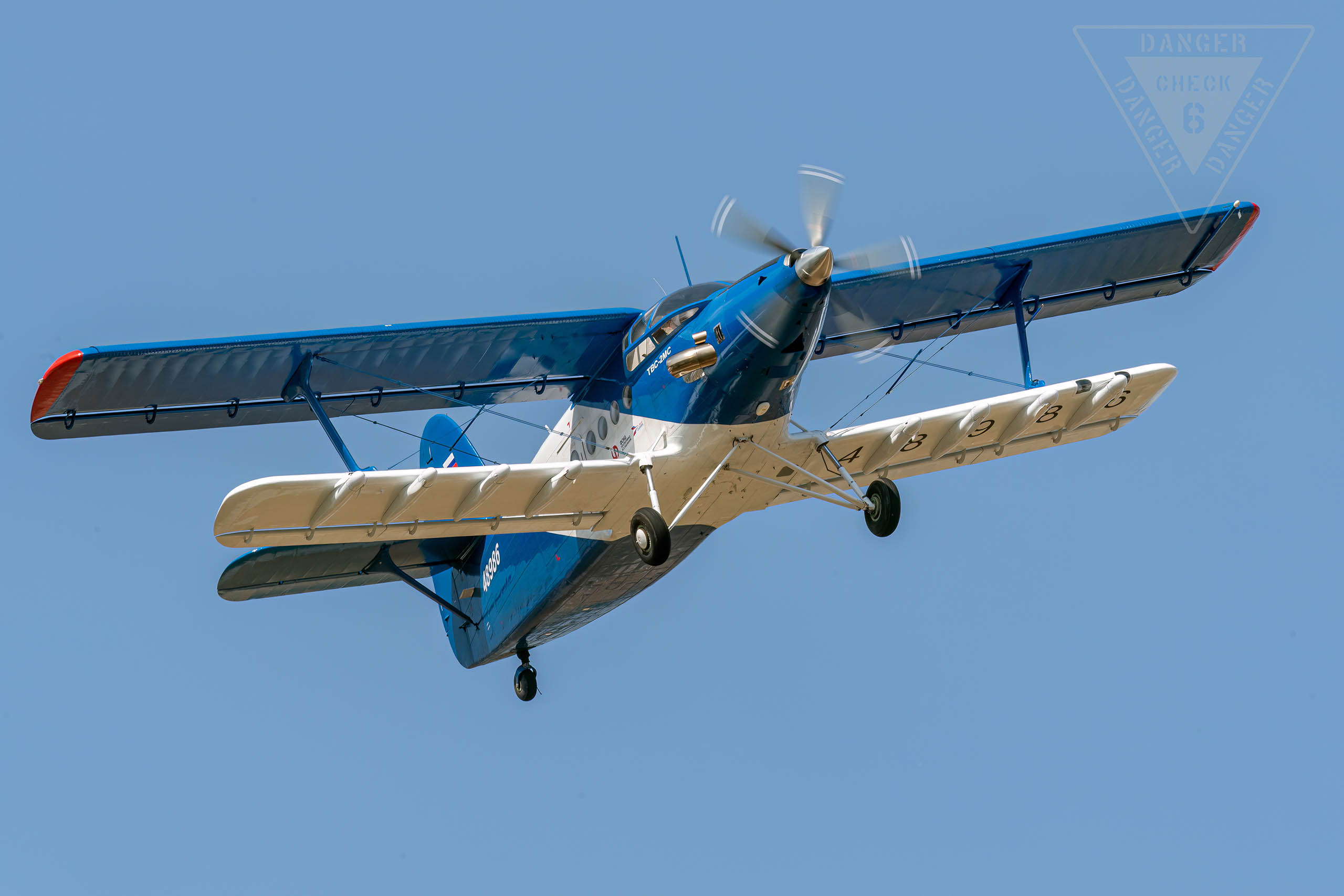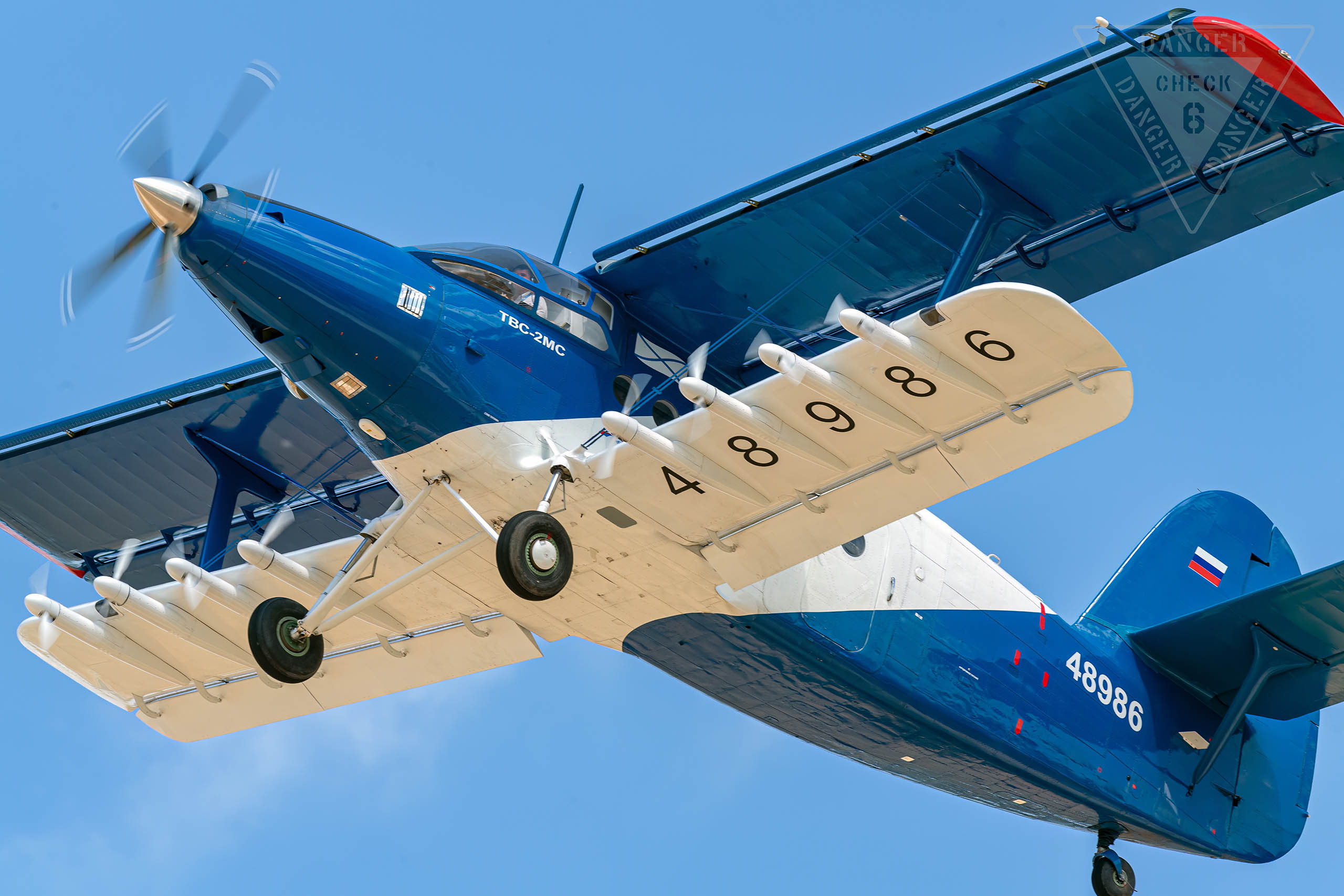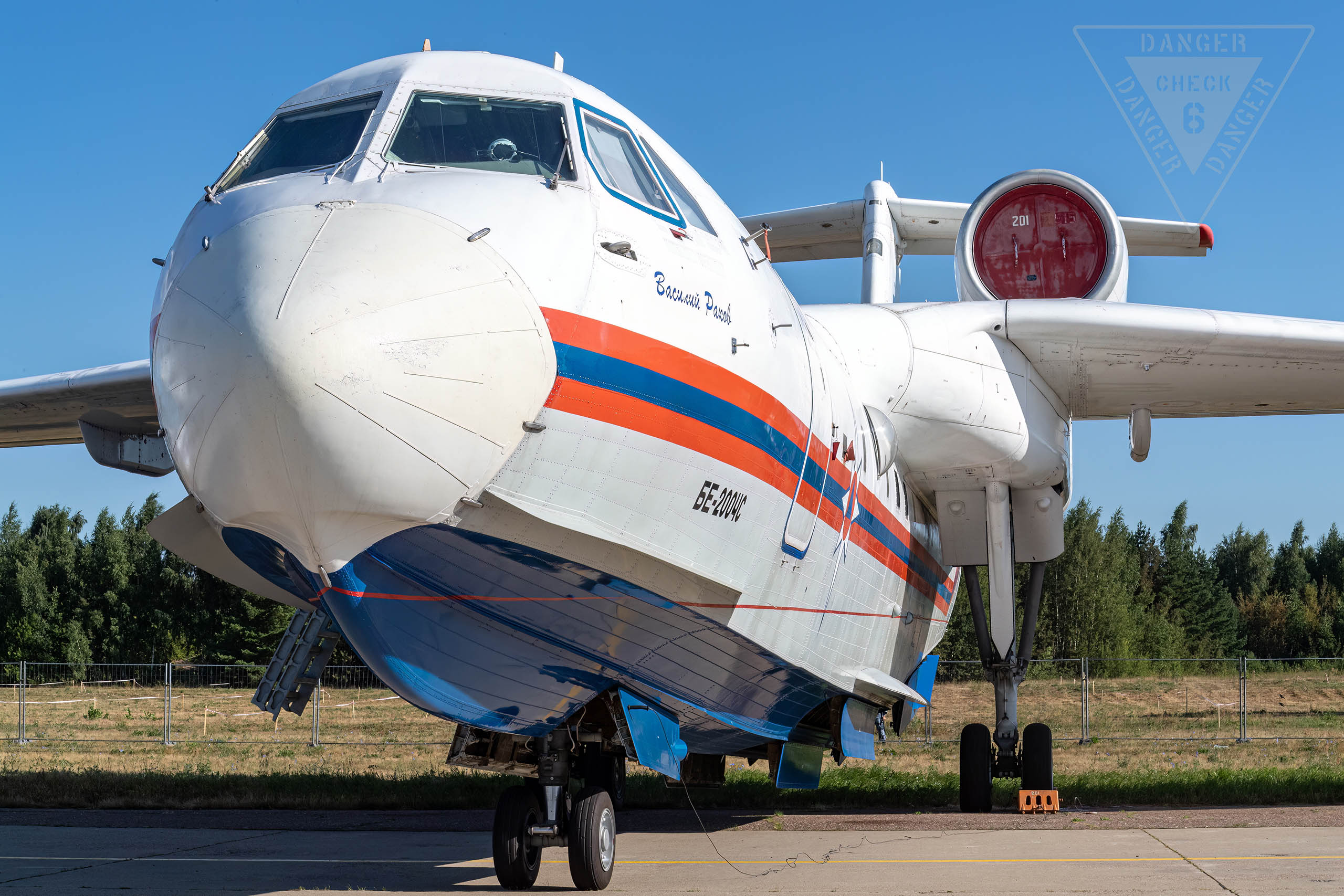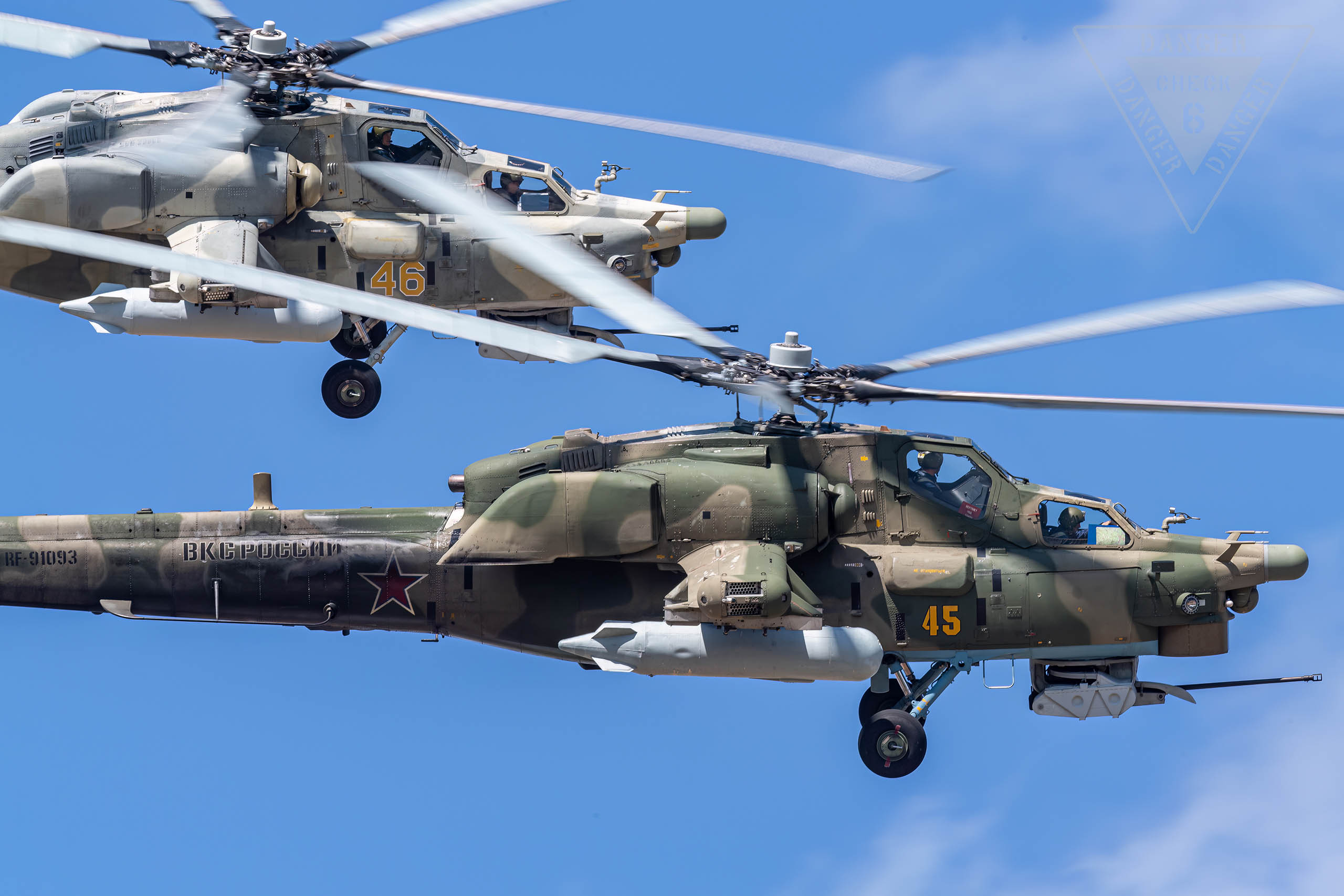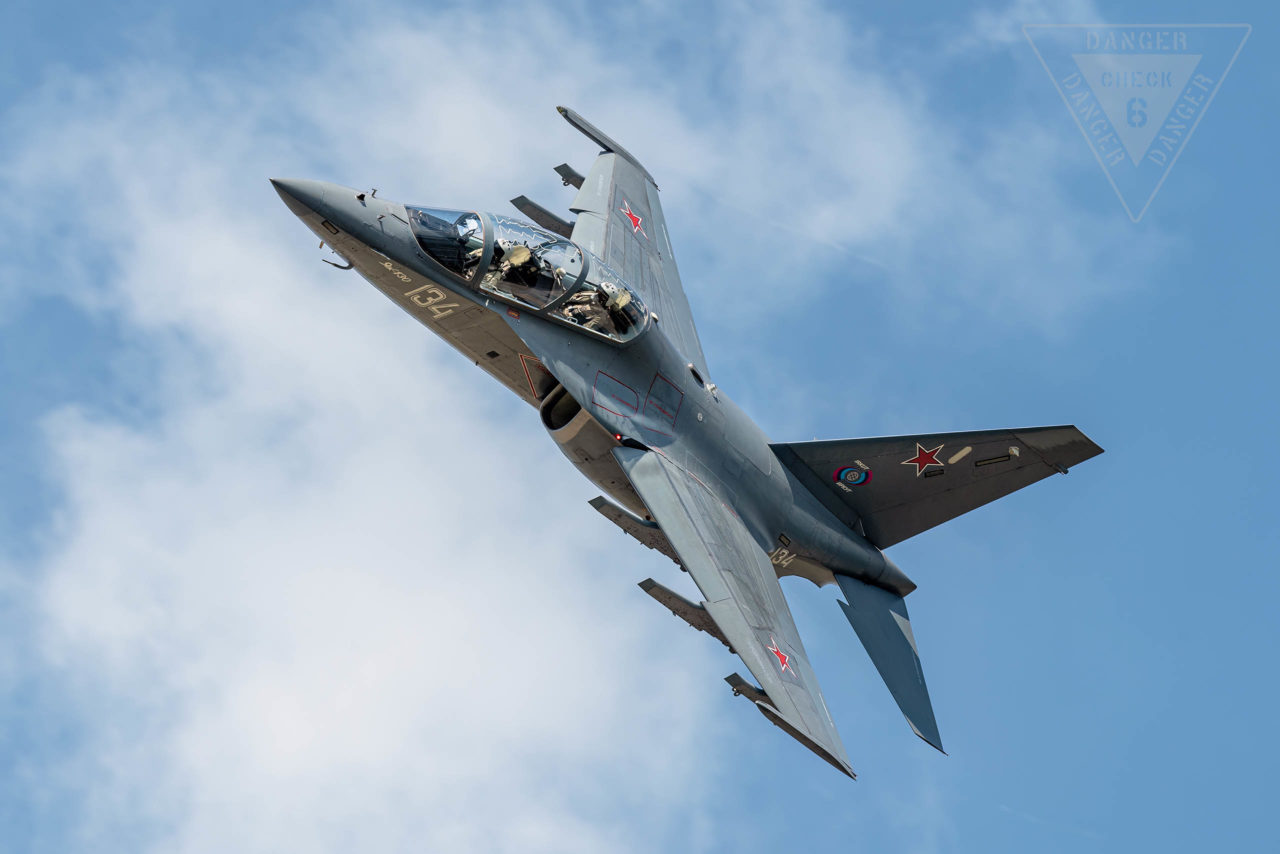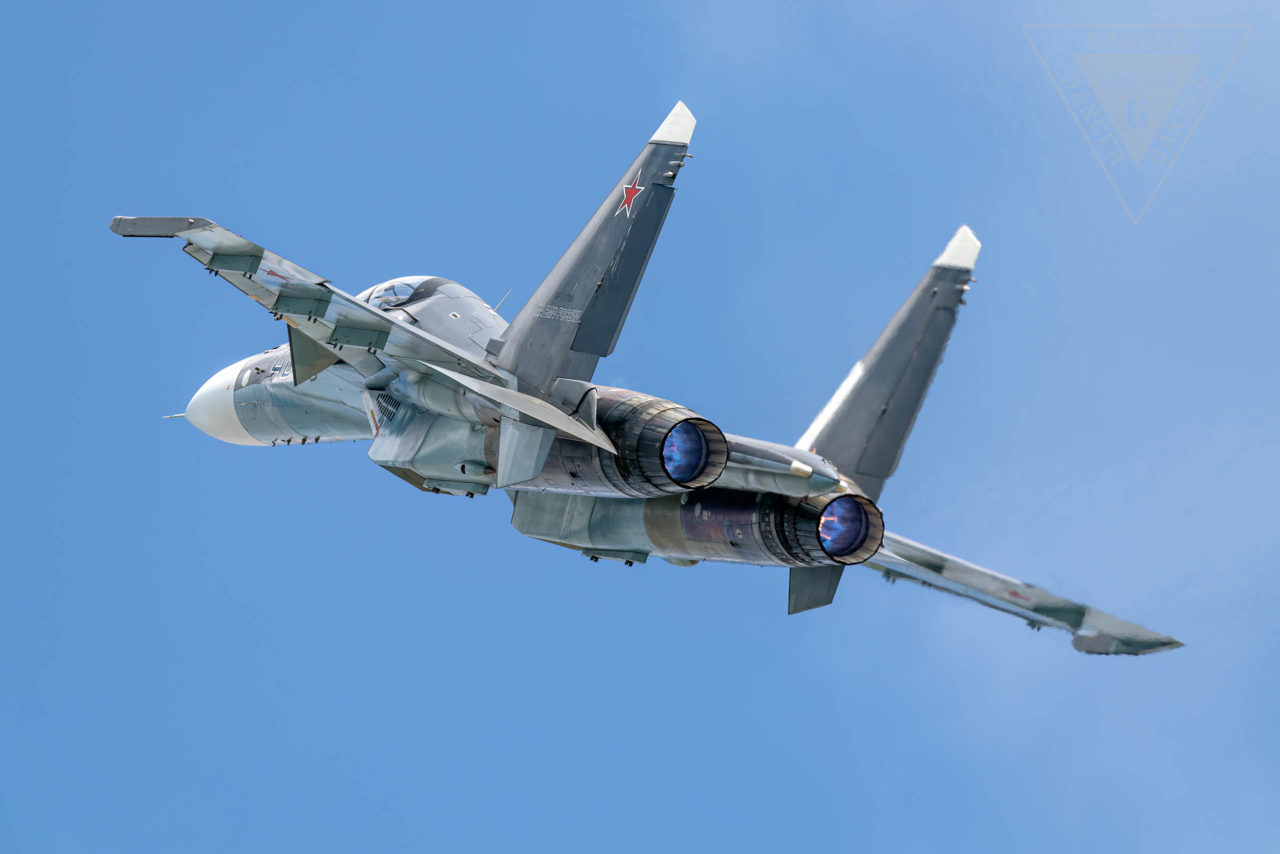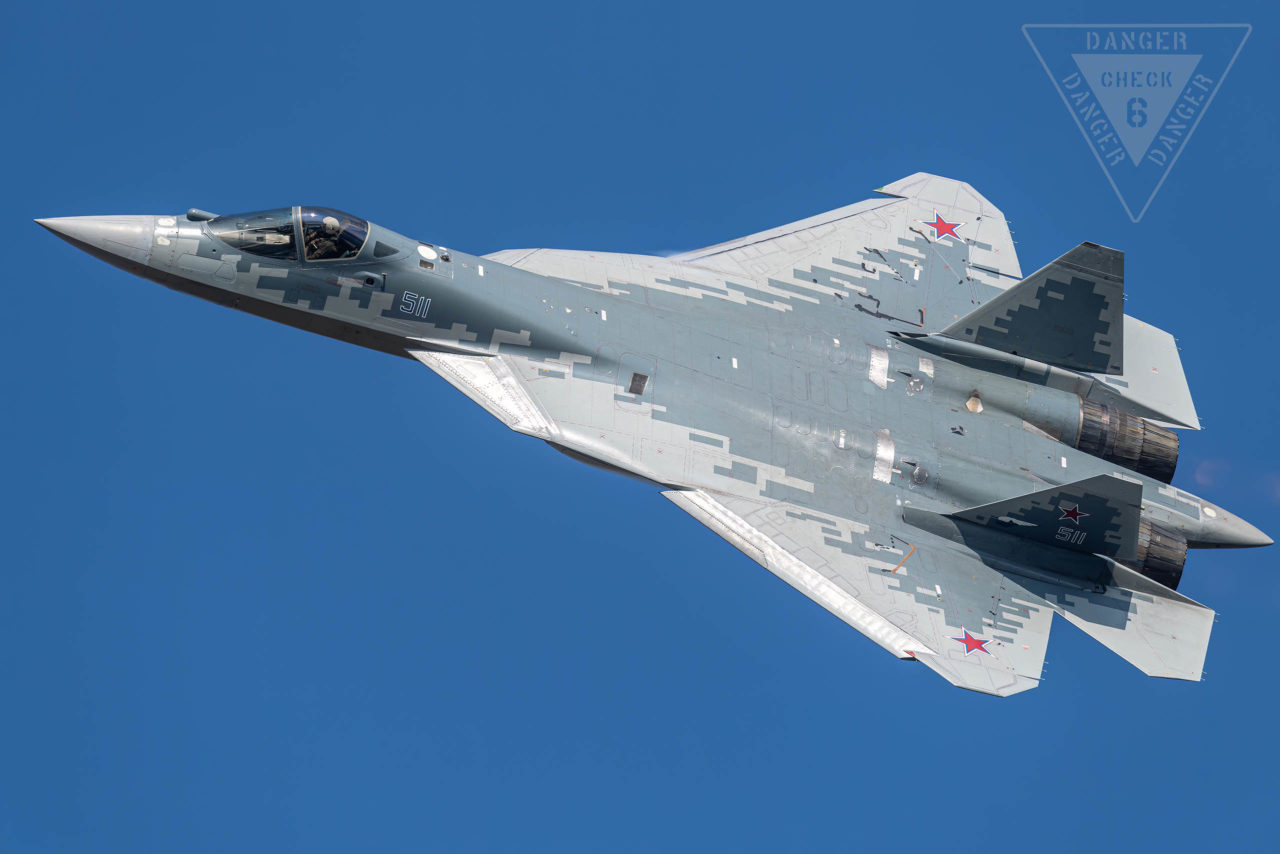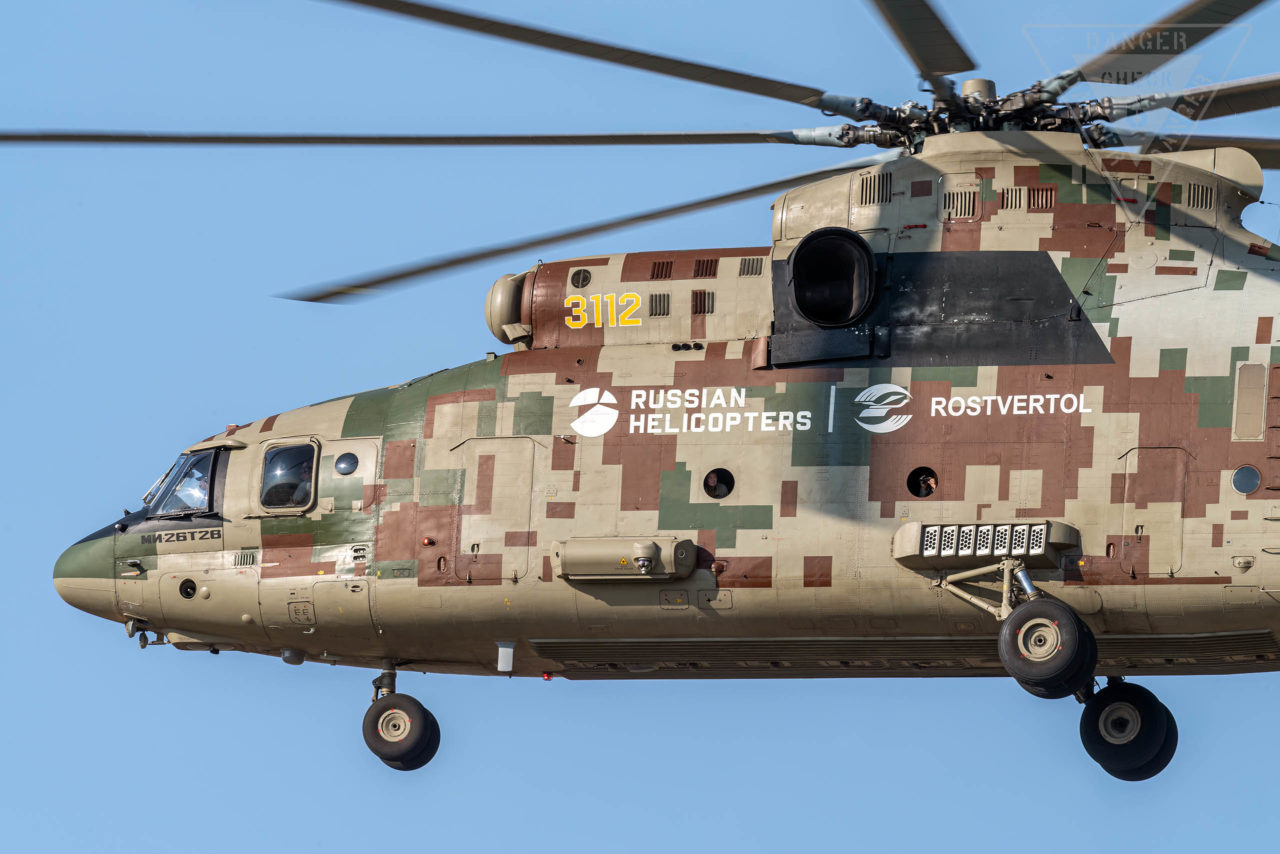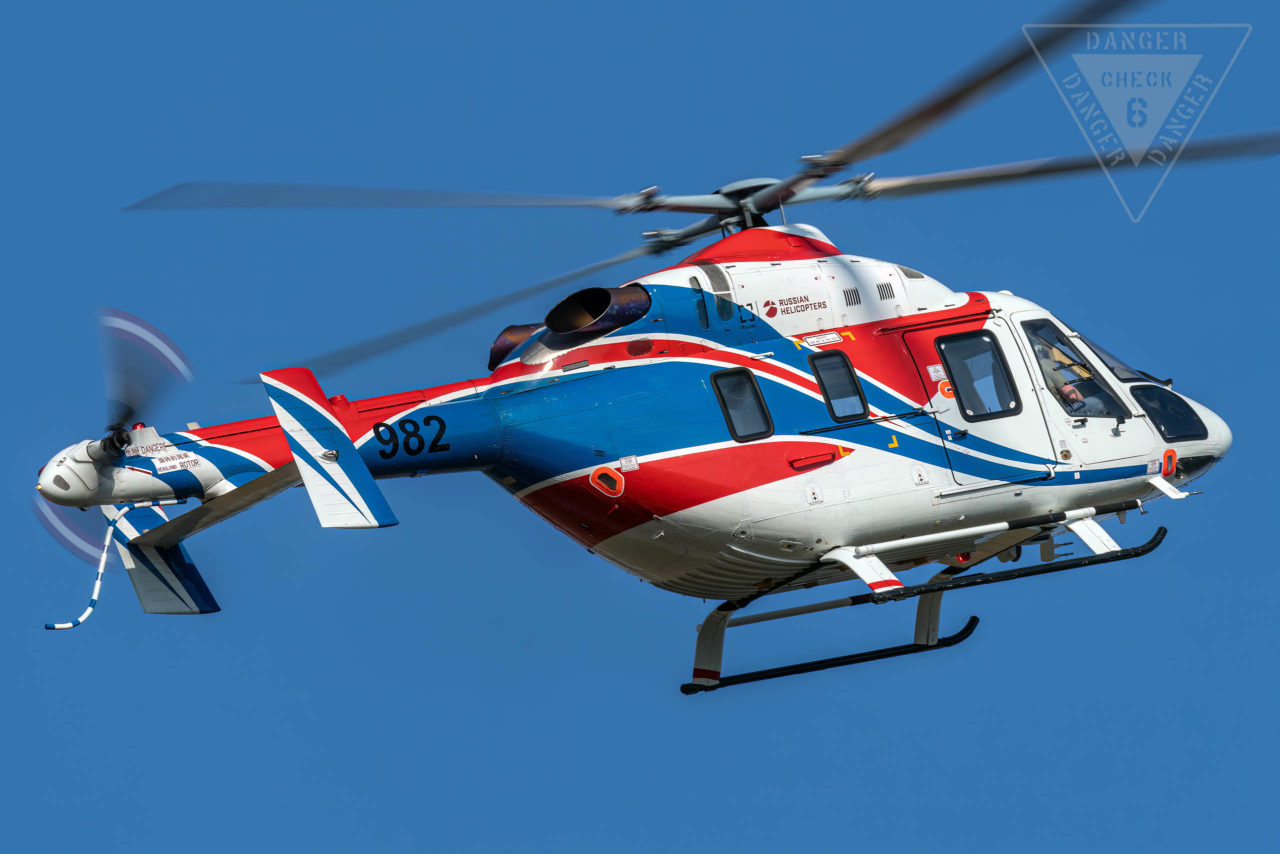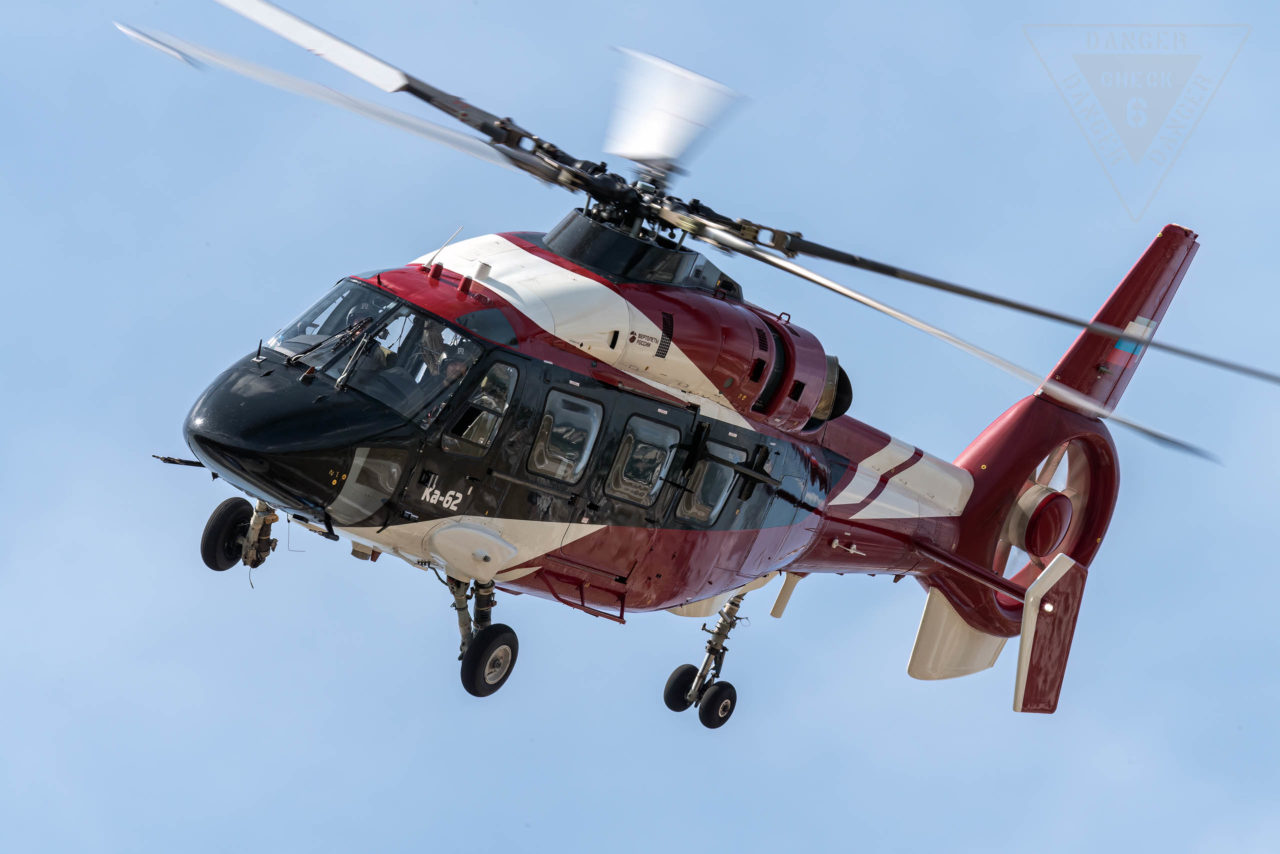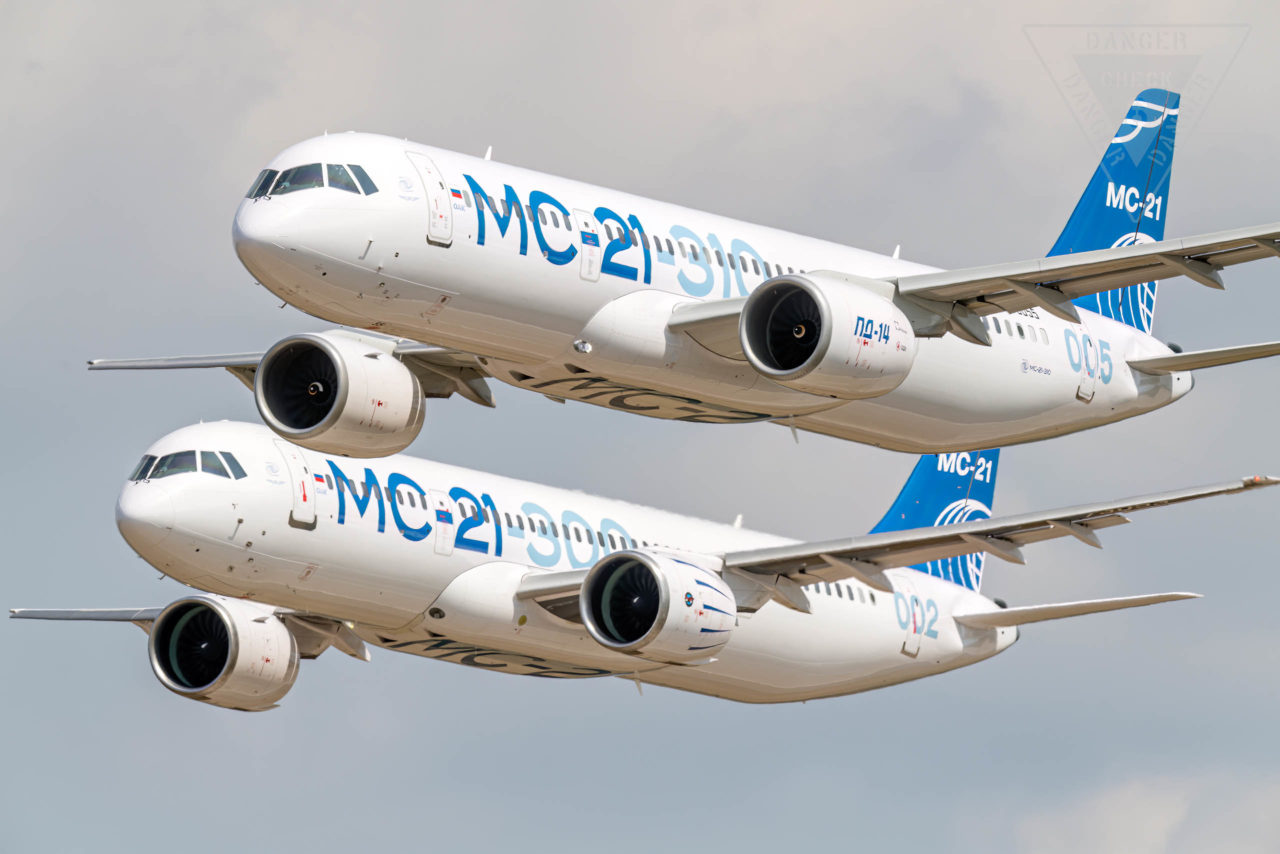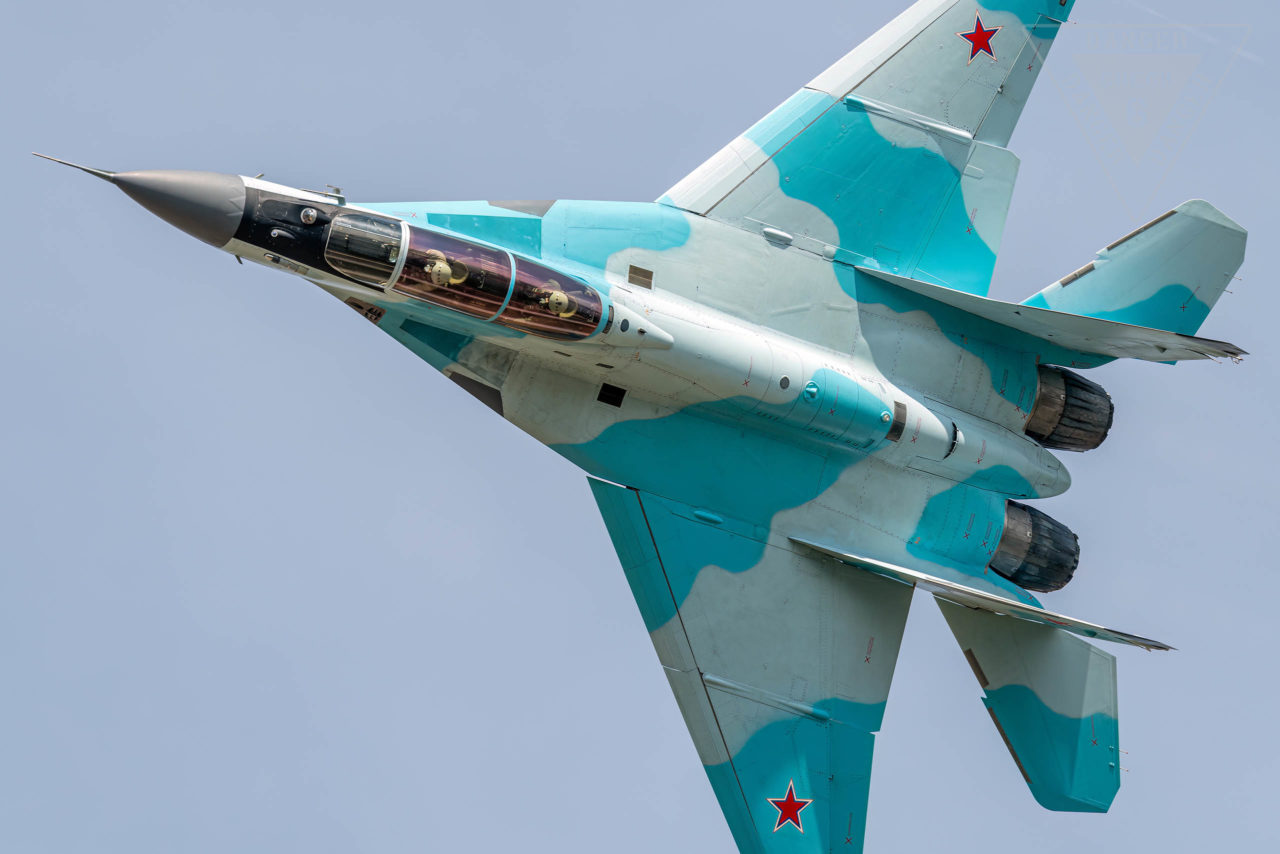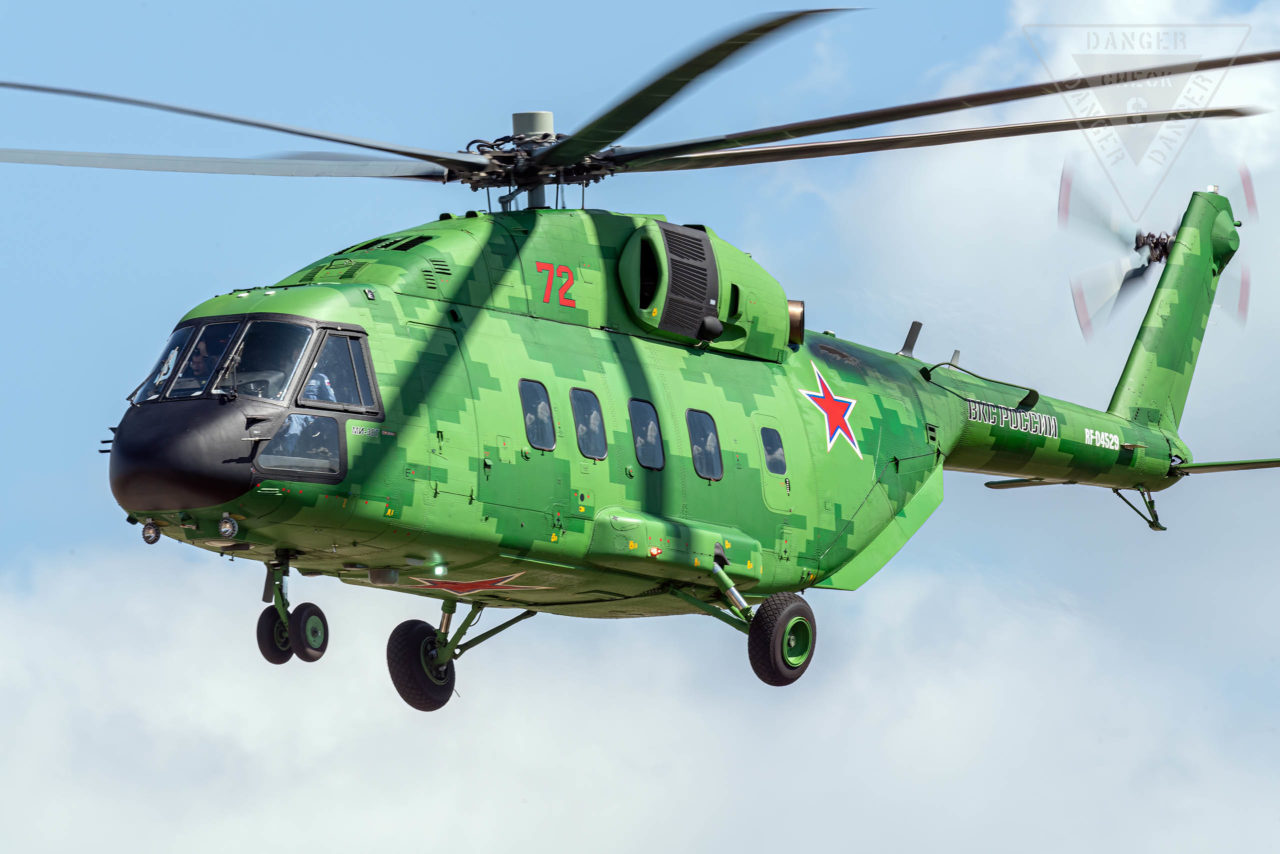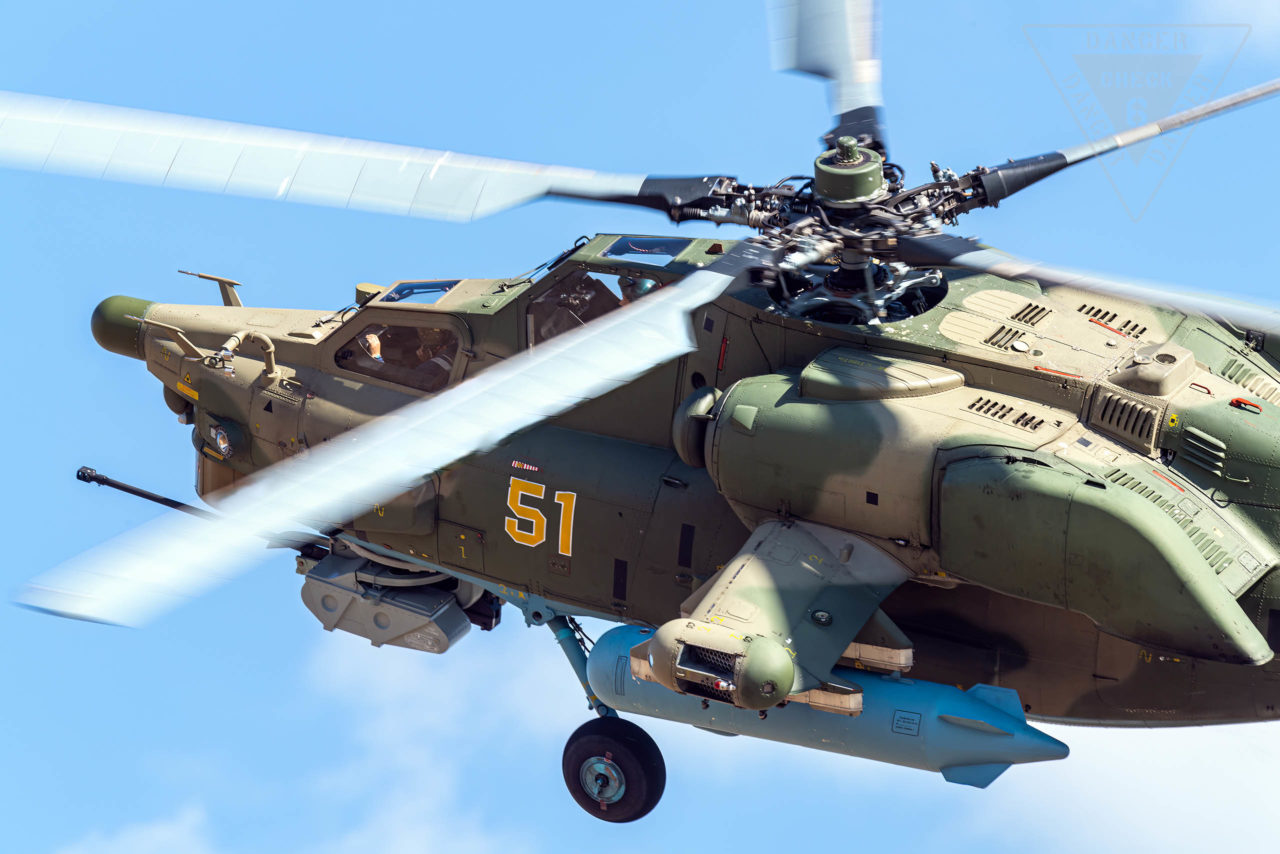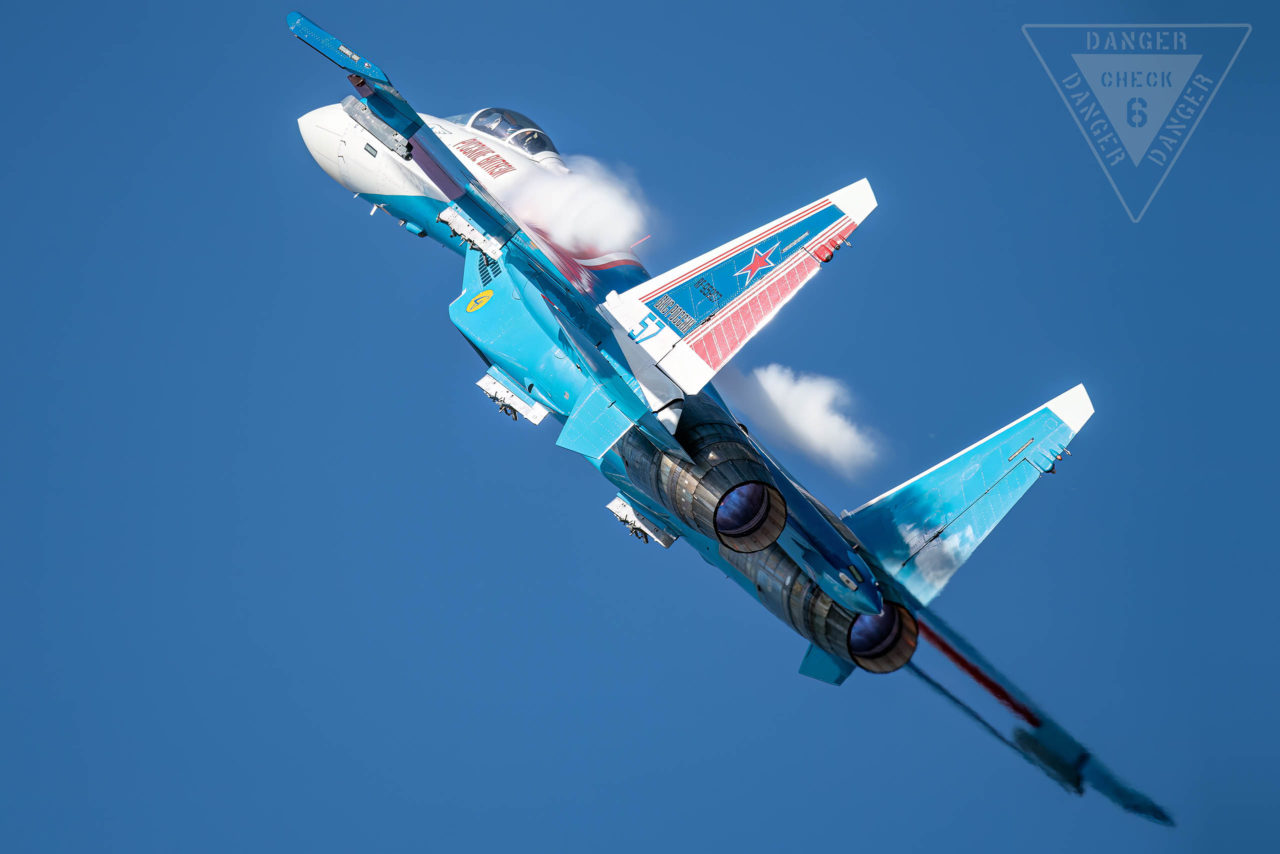XV. International Aviation & Space Salon - MAKS 2021 / Russian Federation
Update: 2021/08/10 by Robert Kysela / CHK6
From the 20th to the 25th of July 2021 the 15th International Aviation & Space Salon (MAKS) took place under some of the most difficult circumstances imaginable. The current global epidemiological situation regarding Covid-19 with its high infection rates, especially in the Moscow region, made holding the biennial event something akin to a kind of Russian roulette. However, with a formal decree issued by the President of the Russian Federation, Vladimir Putin, organisers received the go-ahead to hold the expo, an event enormously important for Russia’s domestic economy. Strict entry conditions were set shortly before the start of the show with every visitor having to show a negative PCR test or present a digital vaccination certificate prior to entry. As a result, the number of visitors that attended MAKS (135,000, according to official figures) cannot be compared to previous events, such as in 2019 when 578,800 spectators were in attendance
Many spectators followed MAKS online via live stream, although unfortunately for most foreign visitors MAKS 2021 was simply not accessible at all. This also had a massive impact on the press representatives who were normally present in large numbers. Of the officially accredited journalists and photographers expected to attend (according to the organisers there were 2,600!) only a handful were actually present. From a purely business perspective however, MAKS 2021 far exceeded expectations. By the end of the six-day event, business deals and contracts with a value of 265 billion rubles (approx. 3.28 billion CHF) had been signed, a very respectable result considering the current global economic situation. Thus, business deals conducted at MAKS 2021 even exceeded the benchmark set by the previous event. The success of an expo cannot however be demonstrated just by monetary figures alone. Good organisation and a top programme are just as important as any eagerly awaited news from the aviation industry.
Real novelties, such as the brand new twin-engine Ilyushin Il-112V military transport were neither present in the flying programme nor in the static display
R. Kysela
In traditional Russian fashion, little was announced in advance about new products on show at MAKS. To be clear, except for the (successful) presentation of Russia’s latest 5th generation fighter aircraft, with the somewhat strange name of Checkmate, news consisted mostly of upgrades of existing types, such as the Irkut MS-21-310 or the Ilyushin Il-114-300. Real novelties, such as the brand new twin-engine Ilyushin Il-112V military transport were neither present in the flying programme nor in the static display. The Russian Air Force has a great need for tactical cargo planes within this class (with a payload of 5-6 tons) and will replace its ageing fleet of Antonov An-26’s with the new type in the years to come. Unfortunately, the official launch of the Il-112V will have to wait until the ARMY2021 Expo which will take place in August 2021. The new transport aircraft is powered by two UEC Klimov TV7-117ST turboprop engines, of which the military version delivers 3,500 SHP. The same engine is also used in the Ilyushin Il-114-300 regional aircraft which was also a daily feature in the flying programme. Even though the Il-114-300 was announced as a novelty, the twin-engine turboprop is, at least outwardly, still a familiar looking model. The Il-114 was developed during the Soviet era and made its maiden flight on 29th March 1990. It was planned as the successor to the Antonov An-24/26/30 series, or rather as a replacement for the venerable Ilyushin Il-18, which in the meantime had become completely obsolete but was still in use in large numbers. After the collapse of the Soviet Union, the production plant was relocated to the independent state of Uzbekistan. Production never reached significant numbers with only 20 of the type being produced until 2012. Half of these aircraft were powered by Pratt & Whitney Canada PW-127H engines, the same engines used on the Dash-8 and ATR 42.
While Sokol in Nizhny Novgorod is responsible for fuselage production, the wings are manufactured at VASO in Voronesh. Final assembly will take place at the RAC MiG plant in Lukhovitsy.
R. Kysela
With the closure of the production facility in Tashkent/Uzbekistan, manufacture and final assembly was moved to the Russian Federation. While Sokol in Nizhny Novgorod is responsible for fuselage production, the wings are manufactured at VASO in Voronesh. Final assembly will take place at the RAC MiG plant in Lukhovitsy. The newly developed UEC Klimov TV7-117ST-01 is a single-shaft turboprop engine providing take-off power of 3,100 SHP and featuring fully digital engine control (FADEC). The same engine, in a modified form, is also used to power the Mil Mi-38T transport helicopter (TV7-117V). The market for the Il-114-300 is enormous, according to Ilyushin`s CEO, Sergey Yarkovoy. Due to long distances and sparse population in the east of the Russian Federation, aircraft such as the Il-114-300, with a maximum capacity of 65 seats, are perfectly suited.
The regional carrier Aurora, located at Yuzhno-Sakhalinsk, has signed the first lease contract at MAKS 2021 for a total of 19 Il-114-300 aircraft that will replace their current fleet of Bombardier Dash-8’s with delivery commencing in 2023. Additionally, this carrier from the easternmost part of the Russian Federation (located on Sakhalin Island) ordered a total of eight Sukhoi SSJ100s to replace their nearly 20-year-old Airbus A-319-100s. The Sukhoi SuperJet SSJ100 has enjoyed tremendous success following many rather lean years with no less than four local airlines ordering a total of 58 aircraft!
THE highlight of this year’s MAKS was the presentation of the latest Russian fighter aircraft in production, the Checkmate. Under a spectacular laser light show, Checkmate was presented to President Putin on the opening day with the following day dedicated to assembled press representatives providing them with an opportunity to view the “MiG 21 of the 21st century” up close. This state-of-the-art fighter is closely related to the Sukhoi design bureau, however considerable speculation did become apparent as all information published to date indicated that preliminary work was conducted by RAC MiG. Following this however the two rival companies merged under a joint management iniative early last year and it now appears that Sukhoi has taken the lead on this prestigious project. To date, however the Checkmate still does not have an official designation although speculation that the single-seat fighter will be designated Su-75 has been neither confirmed nor denied by officials. Checkmate is powered by a single Izdelije 30 engine which provides power for a speed of Mach 1.8+. This is the same high-performance engine that will be installed in the later production version of the Sukhoi Su-57. The weapons payload is said to be approximately 8.5 tons which can mostly be carried in four internal weapons bays. What is special about the public appearance of Checkmate is that it was not a mock-up on display, but an actual developmental prototype intended to perform the types of maiden flight. According to Alexey Bulatov, Sukhoi’s deputy chief designer, this should take place by 2023 at the latest. The manufacturer expects it to take another three years until series production begins, a very optimistic estimate in view of previous experience regarding past projects.
It remains to be seen whether Checkmate can compete with the F-35 Lightning II in technical terms as well as in acquisition costs
R. Kysela
One very interesting feature of Checkmate is the design of the engine air intake with the inlet being fitted very closely around the lower fuselage segment. An engine in the performance class of the Izdeljie 30 requires at least 150+ kg/s of air flow, this large amount of air must go in somewhere and the incorporation of a large conventional air intake would increase the radar signature (RCS or Radar Cross Section), which would in turn reduce aircraft stealth characteristics. This issue was solved by use of a wide but narrow and laterally raised inlet with a protruding lower lip that has the shape of a shovel. A novel solution to a problem that certainly presented one of the biggest challenges to the design team.
By the way Checkmate was presented to the public for the first time, as well as its unusual name, it’s clear where this is heading. Checkmate is to succeed the venerable MiG-21 and its export success as a very highly developed, solid, inexpensive and above all marketable platforms. The unit price is quoted as just 25-30 million USD, which is roughly a third of the price of a Lockheed Martin F-35A JSF. Due to the relatively weak Russian currency now, this is quite understandable, however if the value of the ruble rises, this price will certainly not be sustainable. It remains to be seen whether Checkmate can compete with the F-35 Lightning II in technical terms as well as in acquisition costs. In one respect, the F-35 is indisputably ahead as it is already in operational service, while delivery of the first export model of the Checkmate is still sometime in the distant future.
One of them, the Mil Mi-171A3 prototype is about to make its maiden flight as the first Russian offshore helicopter
R. Kysela
There were also plenty of upgrades in relation to helicopters at MAKS, albeit with only a few that were new. One of them, the Mil Mi-171A3 prototype is about to make its maiden flight as the first Russian offshore helicopter. This model is based on the proven Mi-171 series, but so many changes have been implemented that the A3 is no longer just a modified version, but a completely new design. Series production of this large helicopter, which has been specifically developed to the very high safety requirements and standards of the oil and gas industry, is scheduled to commence in 2022. The initial customer is the state-owned GAZPROM group which has issued a preliminary contract for a total of ten aircraft. The combination of a proven and robust design incorporating state-of-the-art technology (in addition to the obligatory glass cockpit and the use of composite materials) all at a much lower price than comparable western models make this machine an interesting option and not just for Russian oil production companies. This new machine also puts Russian Helicopters in direct competition with established companies such as Leonardo (AW 139), Eurocopter (EC 225), Sikorsky (S-92) and Bell (Model 525) in the offshore helicopter market.
Flight demonstrations of the Kamov Ka-52 ALIGATOR are always a visual highlight. This is an extraordinary combat helicopter that maintains phenomenal maneuverability and considerable combat firepower. In contrast to its counterpart, the Mil Mi-28N, the Ka-52’s mission results in Syria were relatively satisfactory from a technical point of view, even though aircraft and crews often had to contend with performance problems at high temperatures with similar issues also being experienced by Egyptian Air Force Ka-52’s. The Egyptian Air Force initially ordered 46 aircraft, which was later increased to 32 additional Ka-52K KATRANs. The K variant is the naval version of the Ka-52, which is to serve on the two Egyptian MISTRAL class helicopter carriers (ENS Gamal Abdel Nasser and ENS Anwar Al Sadat). Work is currently underway to improve the two Zvezda K-37-800-M ejection seats employed in the Ka-52. With the current version, pilots can only eject up to a maximum speed of 140 km/h in an emergency. However, since the maximum speed of the Ka-52 is 300 km/h, ejection at higher speeds is not possible. Further improvements are being made to generator, navigation and night vision systems.
In principle, the Ka-52 is a relativity easy to fly helicopter, however due to use of a completely different propulsion system by means of a coaxial rotor producing different aerodynamics when compared to conventional helicopters, retraining for the Alligator/Katran is quite a lengthy process. A special feature is the fact that the flight crew of the Ka-52 are completely redundant, i.e., both crew members can fly the aircraft as well as operate all weapon systems independently. What is often overlooked in western media is the fact that the powerful 30mm 2A42-1 on-board cannon is not rigidly mounted but has a swivel range (albeit limited of up to 30° horizontally and up to +/- 6° vertically). The cannon can only be operated by the pilot flying at the time, the guided weapons can be used independently by both crew members.
At the controls of the Su-30SM was none other than Sukhois' chief test pilot Vyacheslav Averyanov, the second aircraft was piloted by test pilot Evgeny Averyanov - his son!
R. Kysela
The flying programme was unfortunately very thin when compared to previous events. Some highlights, which were always an integral part of the flying display at MAKS, such as the Beriev Be-200, could only be viewed in the static display. The same was true for the Sukhoi Su-35S, which was only represented in flight by the aerobatic teams Sokolji Rossii (Соколы России – Russian Falcons) and Russkie Vitjazi (Русские Витязи – Russian Knights). An exception was the formation consisting of two Sukhoi Su-30SMs, which enriched the flight programme on each day with their extremely dynamic display. At the controls of the Su-30SM was none other than Sukhois’ chief test pilot Vyacheslav Averyanov, the second aircraft was piloted by test pilot Evgeny Averyanov – his son!
While the MiG-35 could replace all older models and even take over some of the tactical tasks of the Sukhoi Su-24, technologically it would only be a transitional solution
R. Kysela
The MiG-35 has so far failed to sell, but an order from India would be an important sign for all potential customers. Contrary to predictions, the Russian armed forces have so far received only two aircraft of this type for evaluation. Even the announcement to equip the Strizhi aerobatic team with the latest variant of the MiG has not eventuated. Where the Russian Air Force (Voyenno-vozdushnye sily Rossii – VVS) are headed leaves much room for speculation. While the MiG-35 could replace all older models and even take over some of the tactical tasks of the Sukhoi Su-24, technologically it would only be a transitional solution. If the latest generation of Russian fighter aircraft, such as Checkmate, manages to become available in a relatively short time, then the air will be thin of MiG-35’s, at least in its own country.
A special feature, however, are the eight electric motors mounted on the lower wing
R. Kysela
One very bizarre aircraft that enriched the flight programme at MAKS 2021 with an extremely slow flying display was a nine engine TVS-2MS biplane! Based on the airframe of the Antonov An-2, the TVS-2MS is equipped with a Honeywell TPE331 turboprop engine with a take-off power of 1,110 SHP in place of the Schwezow Asch-62IR 9-cylinder radial engine.
A special feature, however, are the eight electric motors mounted on the lower wing. These direct thrust onto the wing during take-off, landing and in slow flight, thereby generating additional lift that keeps the aircraft aloft. This aircraft is a research project (of the renowned SibNIA institute), which aims to develop an aircraft that can take off and land on extremely short fields (max. 30 x 50m). This was impressively demonstrated with the TVS-2MS becoming airborne in only a few meters. Whether this concept will be used in the civilian sector is, however, questionable. Such a machine would certainly be of great use in disaster relief situations and the military sector.
VERDICT:
MAKS 2021 was a great success despite the ongoing Covid-19 crisis. The organisers have clearly shown that a large event can be held under such trying conditions. Of course, this had a considerable influence on the number of visitors and on the exhibitors in attendance, particularly from the international sector. But perhaps most importantly the message emanating from the fair became very clear: one of independence and distance from globalisation!
The Russian aviation industry has had to learn to deal with ongoing sanctions through a tough learning process that was hard and above all expensive, but it seems to have paid off in the end. The quality of the products from Russia has certainly made a huge leap forward, and as such competitiveness has increased noticeably – and not only this applies to within their own country! If the Russian aviation industry also succeeds with catching up in the after-sales sector, then the efforts of the last few years will have paid off.
Robert Kysela / CHK6

